Demand still high for Twin Cities industrial product. But will rising rates scuttle new developments?
By Dan Rafter, Editor
Demand for industrial product remains high throughout the Twin Cities market. The challenge? Rising interest rates are already scuttling several planned industrial developments, something that will make it that much more challenging for end users to find space in this market.
And the brokers working in the Minneapolis-St. Paul industrial market say that the imbalance between demand for and availability of industrial product won’t be evening out anytime soon.
But while rising interest rates might slow new construction, vacancy rates and industrial rents continue to rise
in the Twin Cities market as 2022 nears a close. That’s evidence of just how strong the industrial market has been here.
rising interest rates and persistent
Year in review 2022: If it wasn’t COVID, it was
inflation
ow strong of a year was 2022 for the commercial real estate market in the Minneapolis area? That depends largely on the sector.
Industrial and multifamily? They continued to boom in 2022, with demand for warehouse buildings and multifamily properties soaring throughout the last 12 months.
 By Dan Rafter, Editor
By Dan Rafter, Editor
The retail sector continued to rebound, too, especially in the suburban areas of the Twin Cities market. Retailers learned well the lessons of the COVID-19 pandemic –online ordering, curbside pickup and enhanced delivery services are keys to success – and are applying them today to keep the business coming.
But the office sector? That market remained largely in limbo as companies throughout the Twin Cities area con-
tinued to finalize their back-to-the-office plans. And as those plans remained hazy, the vacancies in St. Paul and Minneapolis office properties continued to rise. It’s a trend showing few signs of slowing as 2023 arrives.
How best, then, to sum up 2022? It was a largely resilient year in the Twin Cities, even as worries rose along with
©2022 Real Estate Publishing Corporation December 2022 • VOL. 38 NO. 5 Development Showcase: Wakpada Apartments Page 29
YEAR IN REVIEW (continued on page 16 H
14)
DEMAND (continued on page
Chaska Creek 1 in Chaska, Minnesota.




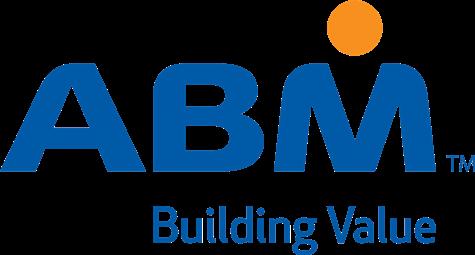










Platinum Sponsors Gold Sponsors Silver Sponsors
& Wakefield, Davis, Hines, JLL, Kraus-Anderson, LVC, Newmark, Schindler,
Cushman
Schorenstein, The RMR Group, Transwestern, Xcel Energy
DEMAND STILL HIGH FOR TWIN CITIES INDUSTRIAL PRODUCT. BUT WILL RISING RATES SCUTTLE NEW DEVELOPMENTS? Demand for industrial product remains high throughout the Twin Cities market. The challenge? Rising interest rates are already scuttling several planned industrial developments, something that will make it that much more challenging for end users to find space in this market.
YEAR IN REVIEW 2022: IF IT WASN’T COVID, IT WAS RISING INTEREST RATES AND PERSISTENT INFLATION How strong of a year was 2022 for the commercial real estate market in the Minneapolis area? That depends largely on the sector.



THE BIGGEST HURDLE TO FINANCING COMMERCIAL DEALS TODAY? IT’S THE UNCERTAINTY The uncertainty is the problem. That’s what makes financing commercial real estate acquisitions and construction loans so difficult today. Just ask Fritz Waldvogel, senior vice president in the Minneapolis office of Colliers Mortgage.
ASPIRING FOR DIVERSITY IN THE TWIN CITIES’ CONSTRUCTION INDUSTRY Just 14%. That’s the percentage of U.S. construction workers who are women, according to research conducted by the Washington Post in August of this year.

UNIVERSITY OF ST. THOMAS’ REAL ESTATE HALL OF FAME INDUCTION CEREMONY CELEBRATES INDUSTRY LEADERS The University of St Thomas Opus College of Business in St. Paul, Minnesota, hosted its 12th annual Real Estate Hall of Fame induction ceremony at the Golden Valley Country Club Nov. 9.
ENERGY EVOLVING: ELECTRICITY A FORCE TO HELP COMMUNITIES REACH SUSTAINABILITY GOALS Do you know where your energy comes from? For most people, the answer to this question is “no.”
EMERGING TRENDS IN REAL ESTATE REPORT: COMMERCIAL REAL ESTATE ENTERS ITS “NEW NORMAL” PERIOD A new normal. That’s what the COVID-19 pandemic has brought to the commercial real estate market, especially in the office and retail sectors.
TECH, NOT AMENITIES, THE KEY TO BRINGING OFFICE WORKERS BACK? What will bring workers back to the office? Many companies are banking on flashy, highend office spaces filled with amenities such as onsite cafes, fitness centers and high-tech conference centers. But a new survey suggests that these amenities might not play much of a role in convincing employees to leave their home offices.
HAS INDUSTRIAL HIT ITS PEAK? NOT QUITE YET During the past two years, investors have flocked to industrial real estate. Urgent demand, high rent growth and low vacancy proved to be a recipe for success for the commercial real estate asset, recording historical growth and sales numbers. Now, as the world moves into a post-COVID-19 era, the sector still looks to be top dog, but will that change?
STILL QUITTING? WAITERS AND FAST-FOOD WORKERS ARE SEEKING GREENER PASTURES Fast-food workers, chefs and waiters are quitting their jobs at a faster rate than are any other workers, according to a study released last week.
PEOPLE
3 DECEMBER 2022 MINNESOTA REAL ESTATE JOURNAL
LOVE THEIR FURRY COMPANIONS How investing
offices has boosted the bottom
CRE firm DEVELOPMENT SHOWCASE: WAKPADA APARTMENTS 1 1 4 10 12 20 8 22 24 26 28 29 Minnesota Real Estate Journal
Copyright ©
Real Estate Journal is published bi-monthly for $85
Jeff
Elm Creek Boulevard, Suite
MN 55369. Monthly Business and Editorial
Elm
Accounting and Circulation Offices: Jeff Johnson, 7767 Elm Creek Boulevard, Suite 210, Maple Grove, MN 55369. Call 952-885-0815 to subscribe. For more information call: 952-885-0815. Periodical postage paid at Maple Grove and additional mailing offices. POSTMASTER: Send address changes to Minnesota Real Estate Journal, 7767 Elm Creek Boulevard, Suite 210, Maple Grove, MN 55369 ©2022 Real Estate Publishing Corporation. No part of this publication may be reproduced without the written permission of the publisher. DECEMBER 2022 MINNESOTA REAL ESTATE JOURNAL CONTENTS LOCATION ADVANTAGES • 15-minutes from the MSP International Airport • 10-minutes to downtown St. Paul with lots of land • 4-Hours to Madison & Des Moines, 6-Hours to Chicago • Centrally located within the US. Easy access to Canada and the rest of the United States WHY WASHINGTON COUNTY? CONTACT Christopher Eng Washington County CDA Director of Economic Development 7645 Currell Boulevard Woodbury, MN 55125 (651) 202-2814 direct (651) 279-0753 mobile ChrisE@washingtoncountycda.org For more information, visit www.EastMetroMSP.org
in veterinarian’s
line of one
(ISSN 08932255)
2022 by the Minnesota
a year by
Johnson, 7767
210, Maple Grove,
Offices: 7767
Creek Boulevard, Suite 210, Maple Grove, MN 55369
President | Publisher
Jeff Johnson jeff.johnson@rejournals.com
Managing Editor
Dan Rafter drafter@rejournals.com
Senior Vice President
Jay Kodytek jay.kodytek@rejournals.com
Chief Financial Officer
Todd Phillips todd.phillips@rejournals.com
Minnesota Event Coordinator
Kaitlyn LaCroix kaitlyn.lacroix@rejournals.com
Art Director | Graphic Designer

Alan Davis alan.davis@rejournals.com
Managing Director National Events & Marketing

Alyssa Gawlinski agawlinski@rejournals.com
7767 Elm Creek Boulevard, Suite 210 Maple Grove, MN 55369

The biggest hurdle to financing commercial deals today? It’s the uncertainty
By Dan Rafter, Editor
EDITORIAL ADVISORY BOARD
JOHN ALLEN
JEFF EATON
MARK EVENSON
PATRICIA GNETZ
TOM GUMP
CHAD JOHNSON
BILL WARDWELL
JEFFREY LAFAVRE
WADE LAU
JIM LOCKHART

DUANE LUND
CLINT MILLER
WHITNEY PEYTON
MIKE SALMEN
The uncertainty is the problem. That’s what makes financing commercial real estate acquisitions and construction loans so difficult today. Just ask Fritz Waldvogel, senior vice president in the Minneapolis office of Colliers Mortgage. He says that there is still plenty of interest among investors and developers in commercial real estate. The challenge is making the numbers work, with the uncertainty over rising interest rates scuttling many potential deals.
We recently spoke with Waldvogel about the state of the commercial financing industry. This industry veteran said that financing deals is no easy task today. But the future? He’s optimistic that the second half of 2023 will see an influx of new financing requests.
Here’s some of what Waldvogel had to say:
Has the volume of commercial financing requests slowed because of rising interest rates?
Fritz Waldvogel: Even with the volatility of the last 12 months, there has been a lot of quoting activity. But deals aren’t coming together as quickly as they once were. The deals that are happening are mostly loan assumptions. We aren’t seeing as many new placements. The 10-year Treasury has been all over the board, up and down. It’s chal-
lenging to feel good about financing until you have a deal that is rate-locked. How difficult has the uncertainty over rates been for the financing industry?
Waldvogel: It’s hard to feel good about the debt markets. The agencies, Fannie and Freddie, are still open for business. But there is a big gap between where current
pricing is based on sellers’ expectations and what buyers can afford to pay. We are not seeing as many transactions closing on the sales side.
What kind of financing deals are you still seeing today?
Waldvogel: We work on a lot of multifamily transactions. There are new deals in this space, but a higher percentage of them are loan assumptions. The debt is already outstanding. A new buyer can come in and assume an existing note. In those cases, the buyers don’t have to worry about the volatility of the debt markets. If you are looking at a 10-year term loan that was closed two years ago, there are still eight years remaining. The interest rate on that might be in the threes. That’s a very attractive rate today.
There is definitely some sticker shock today when we are quoting rates to people. When we started quoting deals in the 6% to 7% range, people’s jaws almost dropped to the floor.
I guess that begs the question, have we been spoiled a bit by how low interest rates have been?
4 DECEMBER 2022 MINNESOTA REAL ESTATE JOURNAL
www.rejournals.com
For information call 952-885-0815
(continued on page 6)
FINANCE
Fritz Waldvogel
Multifamily properties continue to see high demand. Financing new apartment construction or acquisitions, though, has become challenging with rising interest rates.
Commercial
The enterprising team at Colliers Mortgage works collaboratively to analyze and uncover unique opportunities and finance alternatives to help make our clients’ projects successful. Through our broad platform, we are able to offer a full range of finance options and provide the best solution available for each transaction.
• Fannie Mae DUS® and FHA-insured mortgages
• Tax-exempt credit enhancement
• Low-income housing, historic and new markets tax credits
• Various government programs for subordinated loans or grants
• Construction lending
• Bridge lending
• Institutional loan placements
• Tax-exempt bond underwriting for 4% LIHTC projects (through our affiliate Colliers Securities)
Loring Towers
Minneapolis, Minnesota
Affordable Multifamily Housing 230 Units | HUD 221(d)(4) $26,000,000
Rana Village
Minneapolis, Minnesota Market Rate Multifamily Housing 113 Units | Fannie Mae $20,771,000

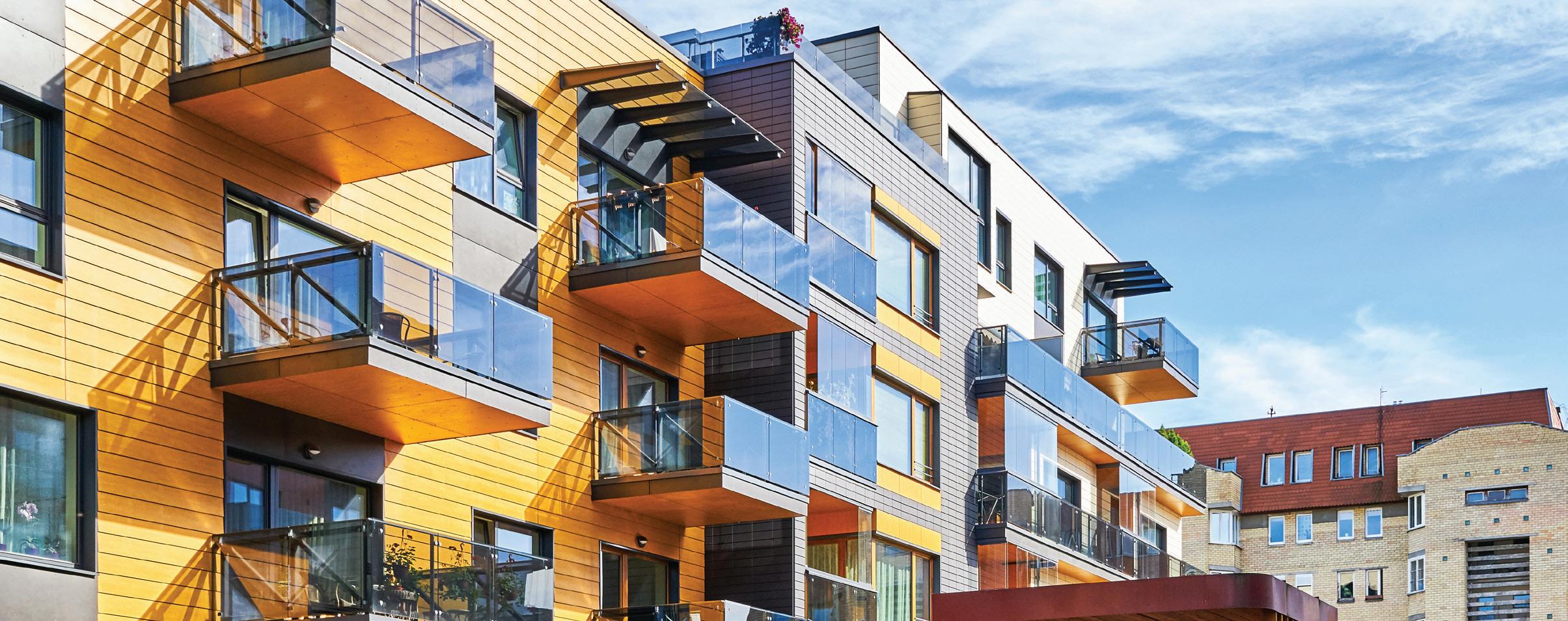
Third North Apartments

Minneapolis, Minnesota Market Rate Multifamily Housing 204 Units | HUD 223(a)(7) $32,454,500
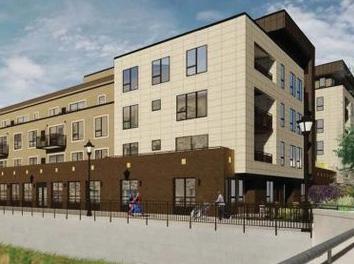
Multifamily Housing | Affordable Housing | Independent Living | Assisted Living | Hospitals | Healthcare Facilities | Student Housing
Real Estate Finance Experts
Our mortgage banking professionals understand the complex requirements involved with integrating multiple sources of funding.
Colliers Mortgage is the brand used by Colliers Mortgage LLC and Colliers Funding LLC.
|
us
Corporate Office: 612.317.2100 | 866.922.0786
colliers.com (find
under services)
Waldvogel: We have had a good run of super low interest rates. That meant a lot of transaction activity. But now, you don’t have as many deals that can be refinanced. We did a lot of refinances in 2020 and 2021. There just aren’t as many deals today that make sense for a refinance.
What about next year? Do you think we’ll see a bit more stability in 2023?
Waldvogel: I think there will continue to be volatility in the market next year. But at some point, people will start transacting again if the interest rates have settled down in some way. We need a tighter band of interest rate fluctuations so that people feel better closing deals. As you get into next year, more debt sources should come back. The life insurance companies and bridge lenders that are currently not in the market should be coming back next year. When we have more alternatives to the agencies, developers and investors will have more options.
How have interest rates impacted the demand
for construction loans?
Waldvogel: I spoke with a developer last week who said that developers were facing a two-headed monster. They have
higher interest rates that impact getting deals financed but also construction costs that are still fairly high. The combination of those two has put a lot of deals on the sidelines. If interest rates come down a
little next year and construction costs come down, we’ll start to see more of those deals. But there has been quite a bit of supply that was planned for the next six to 12 months that is not moving forward.
We are seeing the same thing on the multifamily side. Rent growth has been really strong over the last six or seven years. What we need now is to get rents down. To do that, we need more supply. But because of higher interest rates and construction costs, we are not seeing that new supply.
Do you still see great demand from renters for multifamily space?
Waldvogel: The fundamentals of the multifamily market are still strong. You are seeing solid occupancy in the Midwest and solid rent growth. The volatility that is making life challenging is more because of capital markets issues than any fundamentals in the apartment market.
Why has demand for multifamily remained so high for so long?
Waldvogel: I’ve been in the business about 10 years on the lending side. Rents just continue to go up. We need more housing in this country. And with rates going up, that has made single-family housing less affordable. That pushes people to rent longer. The single-family rental space has become a hot asset class. That space should continue to perform well during the next five years. Millennials and members of Generation Z want a house and a yard. But they can’t afford to buy a house. Renting a single-family home is a good solution. You feel more settled down than you do when you are living in an apartment. You have a yard and more space, but you still are renting. Over the last two or three years, we’ve been seeing more capital flowing into that space. The higher interest rates have only pushed
that demand higher. The demographics were already there. The higher rates just make that market even more appealing.
What do you look at when determining if a financing request is a solid one?
Waldvogel: We focus heavily on the property’s financial performance and take into account the borrowers’ overall experience. We look at both. You have to make sure that the financial performance is strong, but you also need an understanding of who your borrower is. The borrowers’ experience level plays a role, too.
A lot of buyers have moved into the multifamily space during the last seven or 10 years. They came from other asset classes as demand for multifamily just kept rising.
You mentioned earlier that the country is still seeing a shortage of housing. Is that changing at all?
Waldvogel: On a macro level, the country is severely under-housed. That’s especially true with affordable housing or even market-rate housing. It is very challenging to keep up with the demand that is out there for housing. To get more, we need local governments and the private sector to work together to make deals happen. We need new housing desperately.
Looking into the future, what do you see in the financing market for next year?

Waldvogel: I am still bullish that 2023 will see activity pick up, especially in the second or third quarter. I think 2023 will be better than 2022 in terms of the number of requests that ultimately get done.
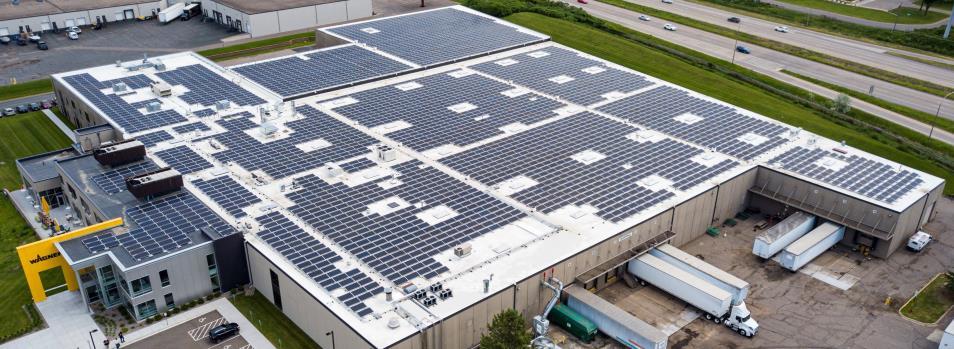
6 DECEMBER 2022 MINNESOTA REAL ESTATE JOURNAL
FINANCE (continued from page 4) Free analysis – call today! (612) 926-8506 sundialsolarenergy.com sales@sundialsolarenergy.com Generate $1+ in NOI PSF of buildable area with solar Partner with Sundial Energy to monetize your roof space Protect your roof with non-penetrating systems Looking for ways to increase cash f low? Sundial develops turnkey solar systems optimized for financial returns “The fundamentals of the multifamily market are still strong. You are seeing solid occupancy in the Midwest and solid rent growth. The volatility that is making life challenging is more because of capital markets issues than any fundamentals in the apartment market.”

Aspiring for diversity in the Twin Cities’ construction industry
Just 14%. That’s the percentage of U.S. construction workers who are women, according to research conducted by the Washington Post in August of this year.
And the industry remains heavily white -- though this is steadily changing -- with Zippia reporting that 58.7% of construction workers are white, while 24.5% are Hispanic, 10.7% African American and 2.7% Asian.
Improving this diversity, both by recruiting more female and minority workers, on construction projects throughout the Twin Cities was the focus of Knutson Construction’s Nov. 9 Diversity in Construction Event held in Minneapolis. Ramona Wilson, diversity director with Knutson Construction, hosted the event, with the goal of giving the subcontractors that work with Knutson the information they need to boost the percentage of females and minorities on construction sites.
The meeting included panelists Trina Bolton, from the Met Council; Rosemary Dolata, from St. Paul Public Schools; Pat Dotter from the Minnesota Procurement Technical Assistance Center; Hector Martinez from US Bank; Igbal Mohammed from the State of Minnesota; Gilbert Odonkor, Hennepin County; Keisha Powell, from Children’s Minnesota; and Elaine Valdez, from the Minnesota Department of Human Rights.
Minnesota Real Estate Journal recently spoke with Wilson about the event and her hopes for creating a more diverse construction industry throughout the Twin Cities market.

What kind of feedback did you get from the diversity event?
Ramona Wilson: A lot of attendees said that they couldn’t believe Knutson would do this. It’s not common for general contractors to do such a thing. They wanted to know why we did this. They aren’t used to someone taking that time and showing how much they are invested in making sure we all understand what the workforce goals are in the state and Twin Cities market for the percentage of minorities and women on construction projects.
Why did Knutson hold this event?
Wilson: We did a similar event like this in 2015. We thought it was time for another event to really show how important diversity is to us on our construction sites. We want our subcontractors to focus on diversity, too. There has always been this theme that contractors and subcontractors must demonstrate a good faith effort to increase the diversity of their workforces. I’ll be honest: That frustrates me. Saying that they only have to make a good faith effort
is almost a cop-out. What are good faith efforts? Does that mean sending out an email saying you are looking for more minorities or women on the job site? Is it just talking on the phone to people about this?
Let’s get away from good faith efforts and let’s talk about what it takes to actually meet the goals on these projects. Let’s get a better understanding of what that means. There has been a lot of change and turnover in our industry since 2015, so this seemed like a good time to hold another event. Our audience consisted mainly of non-diverse and diverse subcontractors. We were all on the same page of saying that it is time to actually work to meet the goals, not just display a good faith effort.
By Dan Rafter, Editor
What were some of the more interesting results from the event?
Wilson: One of the things that we heard was that without setting goals, diversity and inclusion is not possible. If we don’t have goals on these construction projects, we will not get to a place where we will increase diversity.
Attendees also said that the goals must be realistic. The good news is, they are realistic. A lot of folks are under the impression that the diversity and inclusion goals are something that organizations pull out of the air. No. They do their research. They look at who is in the marketplace and who is available to work. It’s not just a number that they throw out there. They do the
research to make sure that the goals are achievable.
Are subcontractors coming closer to meeting these goals?
Wilson: Some are good about it. Some are more willy-nilly. As general contractors, we have to hold them accountable. We have to make sure they understand that diversity and inclusion are important to us. We will meet with subcontractors on projects and talk about where we are on the goals. Can subcontractors do better? Absolutely. And that is what we are looking at. How can we get them to understand that this is important and that we expect this from all our subcontractors?
8 DECEMBER 2022 MINNESOTA REAL ESTATE JOURNAL
Knutson Construction’s Ramona Wilson speaks during Knutson’s diversity and inclusion workshop held in November.
“My goal is to be able to make a difference within our communities overall and to demonstrate to Knutson from a business model that these goals are achievable, that we can be a successful business by having women and minorities as part of our workforce.”
We monitor our construction projects monthly to see how we are doing overall as a company and how our subcontractors are doing. If we see that they are not living up to the same standards that we have at Knutson, we will reach out to them. Our project teams meet with our contractors probably every week. They will reinforce the need to meet these diversity and inclusion goals. We are here as a resource for them. We don’t leave them to work on this blindly. We can help them identify some of those avenues and individuals to help them meet these goals.
Why has it been such a long struggle to boost diversity in this industry?
Wilson: We are used to the status quo in the construction industry. People are not used to change and don’t like change. We have to recognize that the world around us is changing. To continue to grow in our business, we must change with that. We can’t just rely on what we traditionally have had to rely on in the past. We can’t just have all white males in this space. Demographically, we are changing not only in the country but in this state. Who is available to work in this industry today? We see a diverse population available to us. We have to educate and inform those individuals about the opportunities in this industry. We have to make sure this industry is a place of belonging for everyone, not just for white males.

Have you seen positive change on this issue during your career?

Wilson: When I started doing this work and was working with the Association of Women Contractors, that organization had maybe 100 members. Today, it has close to 300, all female contractors. There has been substantial growth in female and minority representation in this industry.
It has to start at the high school level, if not before. We have to educate and bring awareness of the industry to young people. We are behind in that. We are making some
inroads in partnering with area schools. We need to be in front of the young people and tell them that maybe they don’t want to pursue that four-year degree. Maybe there’s another option, especially for those who like working with their hands.

What has your experience been like as an African-American woman in the construction industry?
Wilson: I started with Knutson almost 10 years ago. I came from a Fortune 500 company that was more progressive with diversity and inclusion. Walking into the
building for the first time was almost like going back in time. Back then, if we had around 10% minority representation on a job site and 4% women, we thought we were doing good. Now we are seeing about 25% to 26% minorities on our job sites and about 15% women. We have seen progress. Is there more work to do? Yes. We are plugging along at that.

Being both African American and a woman, I’ve often been the only one who looks like me in the room. It’s something I’m used to. You understand it and you try to learn from it. My goal is to be able to make a difference within our communities overall and to demonstrate to Knutson from a business model that these goals are achievable, that we can be a successful business by having women and minorities as part of our workforce.
How does having a diverse workforce help a subcontractor?

Wilson: If you want your business to grow, if you want to see future growth, you should be invested in diversity and inclusion. That is your future workforce. We want every project we work on to have 32% minority workers on the job site and 25% women. If we want to be around for the next 100plus years as a company, we have to meet the needs of our customers, and that means having a more diverse and inclusive workforce.

9 DECEMBER 2022 MINNESOTA REAL ESTATE JOURNAL
From Historic to High-Tech, The Place to Grow is Community & Economic Development • 507.334.0100 communitydev@ci.faribault.mn.us Advanced Manufacturing | Food Production | Foreign Direct Investment | Available Land Robust Transportation Network| Skilled Workers by Industry | Growing Workforce Population Want to learn more about the exciting opportunities in Faribault? Contact the City’s Economic Development Department today! Small Town Pride. Big City Opportunities. • www.ci.faribault.mn.us • SMALL TOWN PRIDE. BIG CITY OPPORTUNITIES. Advanced Manufacturing | Food Production | Foreign Direct Investment | Available Land Robust Transportation Network | Skilled Workers by Industry | Growing Workforce Population • 507.334.0100 • www.ci.faribault.mn.us • Want to learn more about the exciting opportunities in Faribault? Contact the City’s Economic Development Department today! MREJ - 8.5x5.5 Ad Design.indd 1 7/24/2020 3:59:45 PM Panelists address the diversity and inclusion issues that the construction industry still faces.
University of St. Thomas’ Real Estate Hall of Fame induction ceremony celebrates industry leaders

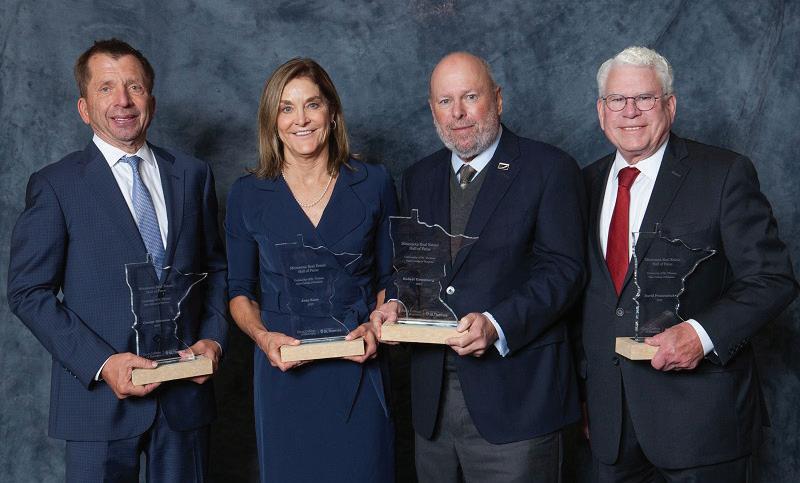 By Staff Editor
By Staff Editor
The University of St Thomas Opus College of Business in St. Paul, Minnesota, hosted its 12th annual Real Estate Hall of Fame induction ceremony at the Golden Valley Country Club Nov. 9. This year’s distinguished class of inductees are David Frauenshuh, founder and chief executive officer of Frauenshuh, Inc.; Robert Greenberg, president of The 614 Company; Jean Kane, retired chief executive officer of Colliers Minneapolis/St Paul; and George Sherman, founder and chief executive officer of Sherman Associates.
The Hall of Fame event drew a crowd of more than 200 industry professionals who gathered to honor the four inductees along with their families, friends and colleagues.

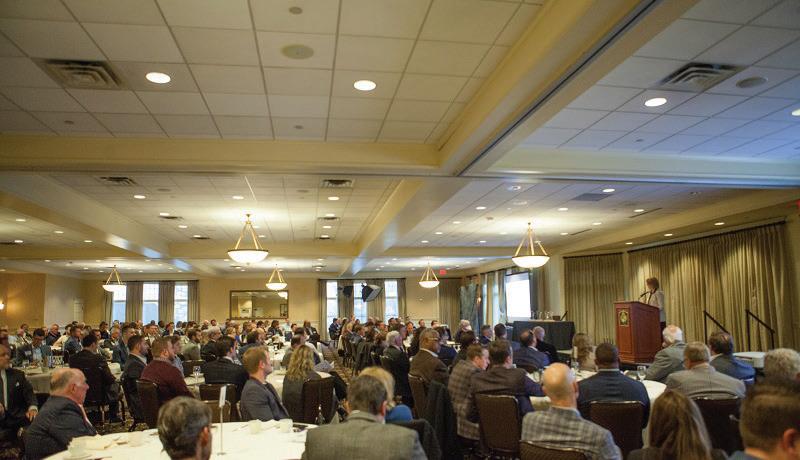
Andrew Babula, director of the UST Real Estate Program said, “David, Robert, Jean and George have been transformational leaders in real estate, and the care and con-
cern they have demonstrated for others has improved communities and individual lives across the United States and as far away as Ghana, Africa.”
The program also included the popular Stofer-Stensby Scholarships awarded to the UST students who were finalists in the annual real estate business competition. Primarily underwritten by United Properties, nearly $20,000 in scholarships are awarded to undergraduate students who developed business concepts that have the potential to be viable, high-growth enterprises or make significant contributions to existing real estate companies.
The students’ submissions and presentations are judged by a panel of prominent real estate professionals. In addition, several of the student finalists are participants in a mentee program led by Russ Nelson,
founder of NTH, who also served as emcee for the Nov. 9 celebration.
The mentee program has paired numerous students in the real estate program with industry professionals who answer questions and provide educational and career advice and networking that often leads to full-time opportunities in the real estate.
The business competition and mentee program are what Dr. Laura Dunham, dean of the Opus Business College, identified as essential in her keynote address. Dr. Dunham said that today’s challenges have changed what it means to deliver excellence in higher education and great universities and business schools must “build more expansive business partnerships through more executive fellows, entrepreneurs in residence, more corporate residencies for faculty, more real-world projects in classes.”
Business partnerships were indeed evident at the event in which 35 different major companies and individual real estate professionals provided sponsorship support for the Hall of Fame event and the burgeoning program at the University of St. Thomas.
Videos honoring each of the four inductees were played during the event and can be viewed by the public on the UST website (www.stthomas.edu) on the Shenehon Center for Real Estate section.
The nomination process for the 2023 Hall of Fame will occur during the spring of 2023. Criteria and nomination forms for the Hall of Fame will be available on the Shenehon Center for Real Estate website early next year.
10 DECEMBER 2022 MINNESOTA REAL ESTATE JOURNAL
Clockwise: A crowd of more than 200 gathered to watch the keynote address of Dr. Laura Denham, dean of the University of St. Thomas’ Opus College of Business; Sandra and David Frauenshuh; t Inductees to this year’s Real Estate Hall of Fame were George Sherman, Jean Kane, Robert Greenberg and David Frauenshuh; Russ Nelson, Jean Kane and Andrew Babula.





Let’s grow your business. econdev.greatriverenergy.com A STATE FULL OF RESOURCES. A FULL-SERVICE RESOURCE TEAM READY TO HELP. From data centers to agribusiness, our economic development team specializes in helping businesses start and expand here. Get started with our cost-free services:
Energy evolving: Electricity a force to help communities reach sustainability goals
By Great River Energy
Do you know where your energy comes from? For most people, the answer to this question is “no.”
If this is true for your company, too, it’s a missed opportunity. You could be saving money and meeting sustainability goals with a closer look at the energy you’re using.
Corporate environmental sustainability goals are becoming increasingly critical as they can help companies across all industries remain competitive, attract new customers and boost their bottom line. Consumers expect more from businesses in terms of sustainability. One path to making headway in this area is by working with an electricity provider that can give you access to intentional and sustainable energy resources.
Great River Energy is a not-for-profit wholesale power cooperative serving 28 member-owners that provide electricity to approximately two-thirds of Minnesota’s geography. The cooperative is dedicated to keeping its members informed of exactly where their energy is coming from and keeping it reliable, affordable and sustainable.
What was once a historically coal-based utility, Great River Energy is evolving rapidly to a power supply portfolio that relies more on renewable energy sources. This shift has positioned the cooperative to meet Minnesota’s 80% greenhouse gas reduction goal nearly two decades ahead of schedule while keeping it affordable.

Great River Energy’s evolution includes the addition of 900 megawatts of wind energy by 2025 — more than doubling Great River Energy’s current renewable energy capacity. Many of these resources will be located near existing power plants, offering a direct pathway to supply renewable energy to the electric grid — as well as a backup when the wind subsides.
The cooperative is also developing an innovative energy storage project that can store electricity and discharge it over several days. This capability has the potential to solve challenges posed by the variable nature of energy sources fueled by the wind and sun.

As Great River Energy continues its energy evolution, electricity will remain as dependable as ever. While the cooperative transitions to a primarily renewable energy resource mix, its fleet of flexible natural gas peaking stations combined with access to market energy will provide the reliability member-owners expect.
“Great River Energy takes pride in serving the region with competitively priced, reliable energy,” said Tom Lambrecht, manager of economic development services. “We understand the importance in meeting corporate environmental sustainability goals and our economic development team is here to help make that happen.”
Great River Energy is prepared to meet all of its members’ energy needs while living its mission to provide them with affordable, reliable energy in harmony with a sustainable environment.
The economic development team at Great River Energy is committed to working with its distribution cooperatives throughout Minnesota and part of
Wisconsin to foster economic activity in cooperative communities by helping entrepreneurs start and grow businesses and manage their energy needs. For more information about Great River Energy’s economic development programs, contact Lambrecht at 763-445-6105.
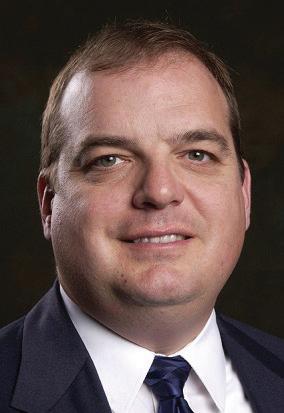
12 DECEMBER 2022 MINNESOTA REAL ESTATE JOURNAL
Great River Energy is evolving to a power supply portfolio that relies more on renewable energy sources, including wind, which has positioned the cooperative to meet Minnesota’s 80% greenhouse gas reduction goal nearly two decades ahead of schedule while keeping it affordable.
Form Energy Battery rendering.
Tom Lambrecht

Chris Hickok, managing director and industrial lead with the Minneapolis office of JLL, said that more than 180 companies are looking for industrial space throughout the Twin Cities market. And these companies are looking for roughly 14 million square feet between them.

To put that into perspective? Before the COVID-19 pandemic, Hickok said, industrial users were looking for about 5 million to 7 million square feet of industrial space in the Twin Cities market in a typical year.
Craig Patterson, senior vice president with Bloomington, Minnesota-based NAI Legacy, said that demand for industrial space in the Twin Cities has been even higher in the past. He said that nine months to a year ago, active users were searching for an unprecedented 12 million square feet of industrial space here.
“Even with interest rates and inflation, this is still a robust market,” Patterson said. “Even before the pandemic, the online ordering of goods and services was escalating. It’s getting to the point now where consumers want to order their products and have them delivered on the same day. It’s forced retailers and third-party logistics companies to be more efficient with their supply chain and logistcs, and that means they need more industrial space.”
An attractive market
What’s behind the soaring demand for industrial space here? Hickok pointed to the strength of the workforce in the Twin Cities and the diverse array of businesses that have set up shop here.
“The strength of our market is driven by a very desirable and educated workforce that companies want to tap into,” Hickok said. “Finding good workers is on the top of all companies’ minds right now. Attracting employees and retaining them, getting the right employees, is challenging today.”
Peter Kroner, Central region lead, innovation and insight, for the Minneapolis office of Avison Young, said that the demographics of the Twin Cities make it an attractive market, too, for end users.
“The demographic story is very strong for Minneapolis-St. Paul,” Kroner said. “People here have disposable income. We have a highly educated workforce. The demographics hit all the marks that anyone looks for when they are looking for e-fulfillment space. Minneapolis checks all the boxes for a lot of occupiers. A lot of occupiers are planting roots here to make sure they can better serve the Minneapolis-St. Paul area.”
Jeff Swanson, senior associate for sales and leasing with the Minneapolis office of Avison Young, said that industrial vacancy rates in the Twin Cities market
today are the lowest he’s seen during his decade-long career.
“There is still so much demand. The new construction in the pipeline will not fill the void we have,” Swanson said. “We still have tenants who can’t find the right space. It doesn’t exist in the geographic area and size that they want.”
Dan Swartz, senior vice president with the Minneapolis office of CBRE, said that the rise of onshoring is also increasing demand in the Twin Cities industrial market.
During the early days of the pandemic, companies struggled to get their products to consumers. That’s partly because so many were manufacturing their products overseas and following the just-in-time model, sending these products to consumers as they were ordered.
As supply chains constricted during the pandemic, the flaws of this model were exposed. Today, more companies are moving more of their manufacturing processes back to the United States.
“End users realized that they couldn’t rely on that just-in-time approach,” Swartz said. “The Twin Cities has a diversified product base. We don’t rely on just one industry. There are lot of different companies in this area with a lot of different needs. Suppliers want to be close to them. They want to be able to get their products to them quickly.”
At the same time, the Twin Cities industrial market doesn’t rely as heavily on ecommerce as do some other Midwest markets. Financial companies and medical device technology providers have carved out a solid foothold in the Minneapolis-St. Paul market, for instance. And while ecommerce is important to the Twin Cities industrial market, the growth of these other businesses is providing it a boost, too.
This diverse industry base has protected the Minneapolis-St. Paul industrial mar-
ket from big drops even when certain industries are struggling, Hickok said.
“In the last four cycles or periods of market disruption, our market has not dropped as low,” Hickok said. “It hasn’t gotten as high as other markets, either, though. We are a steady, reliable market from an industrial standpoint.”
These advantages are important to the Twin Cities. Unlike many Midwest markets, Minneapolis and St. Paul aren’t located in the dead center of the country. That inherently makes it a less essential location for distribution centers.
But Hickok says that the Twin Cities’ other benefits to end users have kept demand high for industrial space here. At the same time, companies do look at this market when they are searching for a hub to distribute products throughout the upper regions of the country.
“Companies aren’t dropping one of their main distribution hubs in the Twin Cities to feed the rest of the country. Logistically, that doesn’t make sense,” Hickok said. “But putting spurs of networks into the Twin Cities that feed the greater Minnesota area, the Dakotas and into Iowa and Wisconsin, that does make sense. A lot of the demand for industrial space here is driven by the quality of companies that we have here, companies like Target, General Mills and United Healthcare. Those big letterhead names bring other companies here that support them. That keeps our diverse economy going.”
Patterson said that the Twins Cities historically has not been much of a distribution market. The region was always considered to be too close to Chicago, the Midwest’s big distribution hub. That began changing as ecommerce sales grew, Patterson said. The growth in ecommerce has resulted in a decentralization of distribution channels, opening new opportunities for Minneapolis and St. Paul.
Today, Minneapolis and St. Paul can rely on their strong highway access, which allows end users to quickly ship goods
throughout the Midwest and down south to Texas. The Twin Cities also rests along the Mississippi River, which allows companies to transport their goods on barges.
“We are a good-sized metro market that can distribute to a 500-mile radius pretty easily,” Patterson said. “That makes us a good location for much of the country as well as our own market.”
Worries over rising interest rates
As strong as demand is for industrial space, economic uncertainty is impacting the sector. Rising interest rates, for instance, are slowing new construction in the industrial market and giving investors who would otherwise purchase these properties a reason to pause. Hickok says that the number of industrial property sales in the Twin Cities is down considerably since interest rates began their steep rise.
“Interest rates have had a dramatic effect on the capital markets side of the business,” Hickok said. “The majority of buyers and sellers are on the sidelines until rates stabilize and they have a clear vision of where rates are going to end up. We are seeing some properties trade. Part of that is because there is still some capital that is looking to get placed.”
Swanson said that while demand for industrial isn’t slowing, aggressive capital is being sidelined.
“There is a longer runway for deals to get done today,” Swanson said. “There isn’t a drop in demand. It’s more like a plateau. We are back to reality from the feeding frenzy we were experiencing before. Things are settling into more of a normal market.”
What is providing a boost for sales, even in this environment of rising interest rates, is the steady rent growth industrial properties here are seeing, Hickok said.
Investors, though, are hesitant to commit to any real estate today, even the still-indemand industrial sector.
“The interest rates have thrown a wrench into how buyers and sellers are looking at the values of properties and what their returns might be,” Hickok said. “The debt markets are up in the air right now. Raising equity is becoming a problem. Until the interest rate environment settles down, this will continue.”
Hickok said that some new industrial projects in the Twin Cities market have been put on hold. That will keep the local industrial market tight from a vacancy standpoint, he said. The market’s vacancy rates are already quite low. But as interest rates keep new construction activity lower, expect industrial occupancy rates to only increase.
Patterson said that it is difficult to underwrite an industrial project today.
14 DECEMBER 2022 MINNESOTA REAL ESTATE JOURNAL
(continued from page 1)
DEMAND
10 West End, a new office development in the Minneapolis suburb of St. Louis Park, is an example of the type of higher-end office space that tenants are seeking today.
“The numbers don’t work,” he said. “The cost factors have escalated 20% to 30% thanks to rising construction costs. Rents have kept up, which is good. But you can’t even figure out today when you go to a lender what your interest rate will be. If you don’t know what the interest rate will be, you don’t what the cap rate is going to be. New projects just don’t pencil out today. People are entering a wait-and-see mode to see where inflation and interest rates go.”
This can make life more difficult for end users who are looking for industrial space in the Minneapolis-St. Paul area.
“Right now it can be very challenging to find industrial space,” Hickok said. “It can be very difficult to get into the exact submarket you are looking for with the right type of space.”
Two weeks before this interview, Hickok said, JLL leased out a 200,000-square-foot industrial building that won’t be delivered until June of 2023.
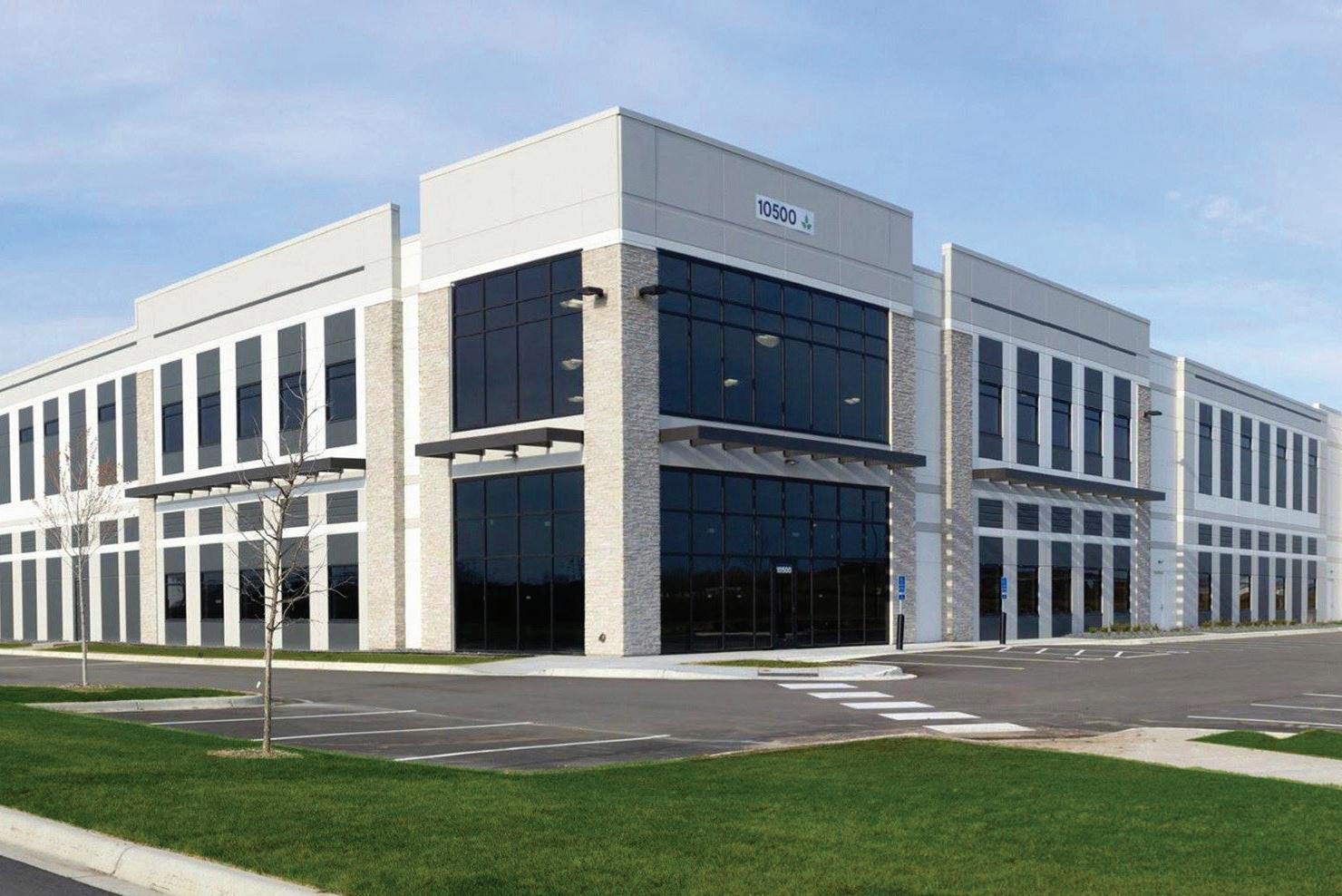
“That’s a good sign of the activity levels,” Hickok said. “It is a challenge for companies to find the space they are looking for.”
Swartz said that expects developers to continue to add new industrial product to the Twin Cities market in 2023. That’s because many of these developments have already been financed. Swartz, though, said that he expects a slowdown in deliveries in 2024. Those are the new products most likely to be scuttled by today’s rising interest rates.
Swartz said that while investment activity in industrial product might slow in the coming months, he doesn’t expect it to peter out completely.
“There is still demand for industrial space on the part of investors,” Swartz said. “But it comes down to understanding where pricing is today and where it will be in the future. The key for new developments lies in discovering where the price is going to be when you deliver the product in two years.”
Swanson said that it was challenging even in a healthy market during the last 10 years for companies to find the right industrial space in the Twin Cities market. Today, with interest rates and the rising costs of materials slowing new construction, end users are finding it even more frustrating to find that perfect space.
“What is the answer to it? I don’t know,” Swanson said. “Developers aren’t confident in the interest rates. I don’t know when that will change.”
Kroner said that many investors will remain quiet until the movement of interest rates settles into a more predictable pattern.
“A lot of funds that were fully committed the last two years to deploying capital into industrial assets are not doing that right now,” Kroner said. “That dry powder is
sitting on the sidelines until we have more clarity on how aggressive or soft the Federal Reserve’s future policies will be. Everyone is in pause mode. The capital is not going anywhere. It is staying on the sidelines.”
An unprecedented industrial market
Hickok has been working in the Twin Cities market since 1989. He says he’s never seen demand for industrial space so high.
He points to the shift in how consumers buy goods, turning to the Internet to find just about anything and then expecting it to show up on their doorsteps in one or two days.
That has resulted in a greater need for warehouse and distribution space. But Hickok said that the growth of other industries is boosting demand for local industrial space, too. The medical device industry continues to take up a larger footprint in the Twin Cities market, he said. As that industry continues to grow, it just adds to the need for industrial space here.
Max Nolan, insight analyst with the Minneapolis office of Avison Young, said that there’s been a change when it comes to who is buying industrial buildings in the local market. During the past year, about 70% of all industrial sales in the market were made by out-of-state capital, Nolan said.
Nolan added that the share of industrial properties in the Twin Cities market held by owners with 30 properties or more has also doubled.

“Owners see Minneapolis as a good investment opportunity,” Nolan said.
Patterson said that the Minneapolis-St. Paul industrial market does face a supply issue. And it doesn’t look like that issue is going to resolve itself anytime soon.
“Once the pandemic hit and the demand for industrial space escalated to an even greater point, it created a supply issue,” he said. “Couple that with the fact that you aren’t able to get product and buildings up
as quickly as you used to, and you’re seeing even more pressure on the market.”
Patterson said that the industrial market in the Twin Cities region had a vacancy rate of 3% as of early December. That’s low, especially considering that a stable market will have a vacancy rate of 6% to 7%.
The good news is that there is a solid amount of new construction taking place now, with 5 million square feet of industri-
al product under construction as of early December. The challenge? The market as of the end of 2022 was demanding 11 million to 12 million new square feet of industrial space, Patterson said.
“We are still going to be short of industrial space,” Patterson said. “Anyone looking for 200,000 square feet or greater is going to have very limited options.”
Companies face other challenges when looking for space in the Twin Cities market, Swartz said. It’s not too difficult for developers to find enough labor to build new industrial space. But end users often struggle to find enough workers to staff these facilities, he said.
“Companies are 100% making decisions based on the availability of labor,” Swartz said. “That can be a challenge here. Our unemployment rate remains low, so it can be a struggle to find enough workers.”
And a prediction for next year? Swartz offers this:
“I would expect 2023 to have solid demand, limited availability of space and a continued increase in net rental rates,” Swartz said. “We have seen unprecedented growth in industrial rental rates. I expect that to continue.”
15 DECEMBER 2022 MINNESOTA REAL ESTATE JOURNAL
The Abor Lakes Business Park III also delivered in the third quarter, in Maple Grove, Minnesota.
interest rates and inflation. And even if there’s still concern that downtown Minneapolis isn’t nearly as vibrant as it was before COVID hit.
Nothing is slowing industrial
The industrial market throughout the Twin Cities area remained strong throughout 2022. Consider the third quarter Industrial Insight report released by JLL. The report said that the Minneapolis-St. Paul area absorbed nearly 2.2 million square feet of industrial space in the third quarter of the year.
That pushed the total year-to-date absorption level here to more than 5 million square feet as the end of the third quarter.
As demand for industrial remained high throughout the year, developers responded. JLL reported that more than 2.6 million square feet of spec industrial development broke ground in the third quarter of 2022. More than 4 million square feet of spec industrial construction will have been completed in 2023 in the Minneapolis-St. Paul market, JLL says.
But what about rising interest rates? They have impacted the industrial market in the Twin Cities area. But even with this pressure, JLL reports, sales activity remained strong in the third quarter of the year.
JLL pointed to Hyde Development, which expanded its holdings in Minneapolis-St. Paul with the purchase of Waters Business Center. Also during the third quarter, Westmount Realty Capital entered the Twin Cities market with a five-building portfolio acquisition.
Big industrial leases signed during the quarter included Border States Electric taking 125,112 square feet at Zachary Distribution Center, Pepsi leasing 117,000 square feet at NorthPark VII and E.J. Welch leasing 111,222 square feet at Arbor Lakes C.
Acme Tools and Irby each leased 115,888 square feet to fill both Capstone 35 North and South during the quarter, while Stratasys leased 168,100 square feet of space at Parkers Lake Commerce Center.
Even with the threat of rising interest rates, industrial sales remained strong in the third quarter of 2022, with JLL reporting more than $300 million worth of industrial deals transacted during the three months.
In one of the bigger sales, Virtus RE Capital purchased a four-property portfolio in Minnetonka for $53 million that is fully occupied by Abbott Laboratories.

JLL predicts that demand will remain strong in the Twin Cities industrial market as the calendar flips to 2011. In its report, JLL said that nearly 11 million square feet of tenants are actively in the market. The big challenge might be for these tenants to find space. As JLL says, rising interest rates
and construction costs might combine to reduce the area’s construction pipeline as developers struggle to qualify for financing even as tenant demand remains high.
CBRE provides additional evidence that the Minneapolis-area industrial market thrived in 2022. According to the company’s research, the industrial vacancy rate in the Twin Cities market dropped to 3% in the third quarter of the year. That’s a dip of 120 basis points when compared to a year earlier.
CBRE also pointed to a steady flow of speculative industrial deliveries during the third quarter. This included the 610 Broadway Business Center in Brooklyn Park, Arbor Lakes Business Park III in Maple Grove, Chaska Creek 1 and the Nordeast Business Center in Minneapolis.
CBRE also reported that new leases and expansions accounted for 67% of all market activity in the region in the third quarter. In the Northwest submarket, 81% of third-quarter activity came in the form of new leases.
An end to the days of soaring multifamily rents?
The multifamily market in the Minneapolis-St. Paul market has been hot for a long time, with demand for apartment units almost as strong as the demand for industrial assets in the Twin Cities region.
But Apartment List’s December 2022 rent report suggests that the local multifamily market might be cooling off a bit, especially when it comes to rent growth.
Apartment List reported that the overall median monthly apartment rent in Minne-
apolis stood at $1,074 in November. That is down 1.6% from October and up just 0.2% from a year ago.
While rents are still solid here, Minneapolis’ rent growth during the past year has fallen behind both the state of Minnesota, which saw median apartment rents jump 2.8% in November on a year-over-year basis, and the nation, which saw median rents rise 4.6% this November compared to the same month in 2021.
The median one-bedroom rent in Minneapolis was $968 in November, while the median two-bedroom rent was $1,251.
You can better see how rent growth is cooling by comparing the first 11 months of this year to the first 11 of 2021.
According to Apartment List, apartment rents in Minneapolis have risen 0.8%
16 DECEMBER 2022 MINNESOTA REAL ESTATE JOURNAL
YEAR IN REVIEW (continued from page 1)
The Broadway Ridge office building in Northeast Minneapolis sold during the third quarter of 2022. (Photo courtesy of Altus.)
“As demand for industrial remained high throughout the year, developers responded. JLL reported that more than 2.6 million square feet of spec industrial development broke ground in the third quarter of 2022.”
during the first 11 months of this year. During this same period last year, median apartment rents had jumped by 6.9%.
Apartment List also reported that rent growth in Minneapolis ranked 78th out of the country’s 100 largest cities in November.
Apartment List reported that Maple Grove is currently the most expensive city in the Minneapolis market in which to rent. The median one-bedroom rent here stood at $1,410 in November, while the median two-bedroom rent was $1,723. Edina also saw higher rents, with a median one-bedroom rent of $1,419 and a median two-bedroom rent of $1,672 in November.
On the lower end of the scale was the city of Minneapolis itself, which saw a median one-bedroom rent of $968 in November and $1,251 for two-bedroom units.
The dip in median rents, though, doesn’t mean that the local apartment market is struggling. Demand is still high for units among renters, while investors, despite rising interest rates, are still interested in placing their dollars in multifamily assets.
But those days of soaring monthly rents? They might be coming to an end.
Still waiting for the office rebound
The office market in the Twin Cities presents a stark contrast to the industrial sector here. Cushman & Wakefield, in its third
quarter office Marketbeat, reported that the office vacancy rate stood at 24.6% in the Minneapolis-St. Paul market. And in the CBD that figure stood at an even higher 29.3%, though that is a slight drop from the 30.3% vacancy rate for the CBD in the second quarter.
There was some good office news, though, in Cushman & Wakefield’s report. The 285,120-square-foot Northstar East building and the 396,080-square-foot Northstar West building were each removed from vacancy stats because of notable construction starts at these properties. Sherman Associates announced plans to convert the
East office building to a new multifamily project, while Taconic is renovating the West building to a higher-end office space.




Overall, though, Cushman & Wakefield’s report paints the picture of an office sector that is still in flux. This isn’t unique to the Twin Cities: Office markets across the country continue to struggle as the workfrom-home movement maintains its hold on the workforce.
Consider that the Twin Cities market saw nearly 2.7 million square feet of vacant sublease space in the third quarter. That is an all-time high for the market.
There were some larger office sales in the third quarter. Cushman & Wakefield cited the sale of Broadway Ridge in Northeast Minneapolis, which traded for more than $160 a square foot. This Class-A office property was about 94% occupied at the time of sale.
Carlson Center East II in Minnetonka also sold during the third quarter, with a sale price of more than $160 a square foot and 90% occupancy.
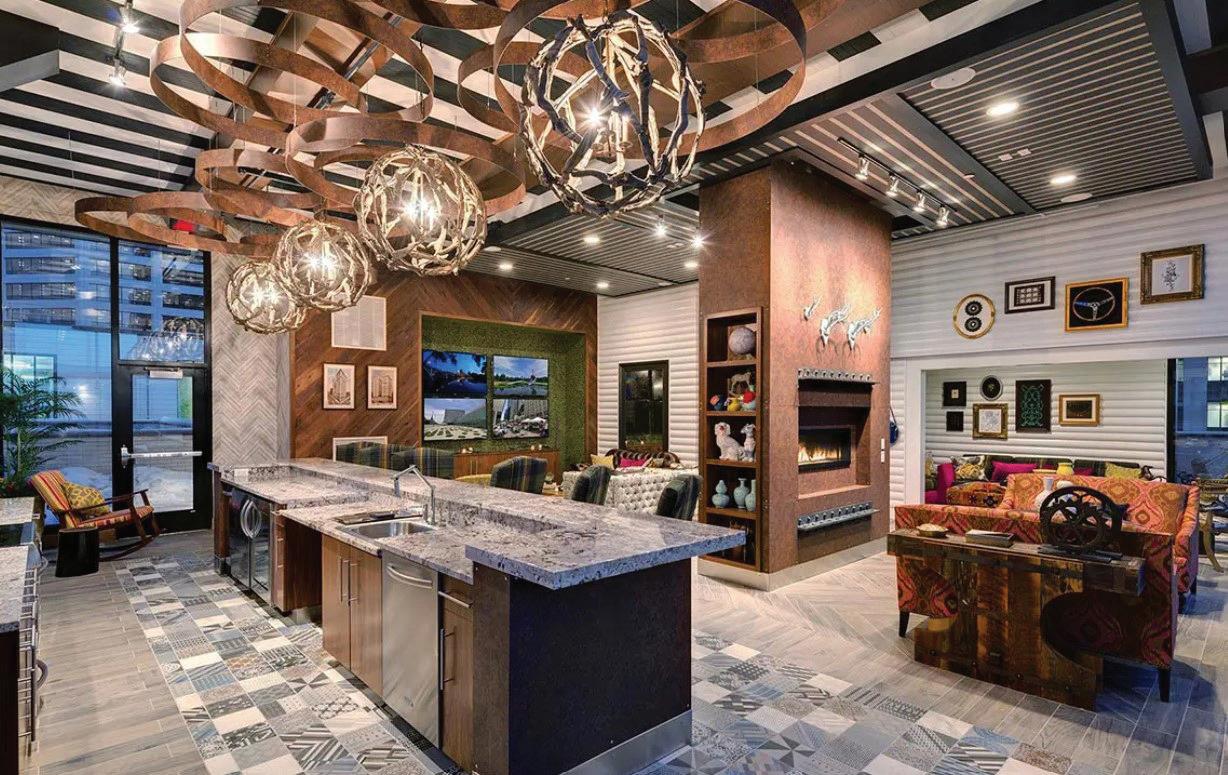
Forte Real Estate Advisors said that the Minneapolis-St. Paul office market saw 341,300 square feet of negative absorption in the third quarter. According to Forte, the market saw 198,600 square feet of direct negative absorption and 145,000 square feet of negative absorption from subleases.

There was still some office construction taking place in the market, though. Forte reported that during the third quarter of this year, 15 office construction projects were underway in the Twin Cities market, totaling just under 1 million square feet. Forte said, too, that 10 office properties had been delivered in the Minneapolis-St. Paul market as of the end of the third quarter. These new projects totaled 810,000 square feet.
The Twin Cities market experienced more than 1.1 million square feet of office leas-
17 DECEMBER 2022 MINNESOTA REAL ESTATE JOURNAL AMCONCONSTRUCTION.COM COMPLETE CONSTRUCTION SERVICES multi-family / industrial / hospitality / office / retail DESIGN-BUILD ARCHITECTURE GENERAL CONTRACTING
YEAR IN REVIEW (continued from page 18)
The clubhouse of the Soo Line Building City Apartments in downtown Minneapolis.
ing activity in 385 transactions during the third quarter, according to Forte.


A resilient retail market






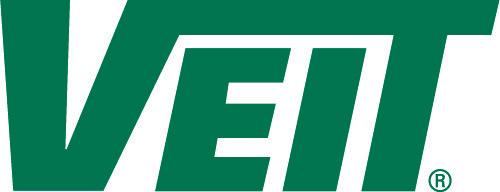





The pandemic hit the retail sector especially hard in its earliest days. But retailers evolved throughout COVID, focusing on boosting their delivery and online services. Today, then, many retailers are thriving as they continue to benefit from the combination of soaring ecommerce numbers and a rising tide of shoppers returning to physical stores.
The proof of how resilient retail has become? Just look at the holiday shopping numbers from Thanksgiving weekend of this year. The number of shoppers hitting stores from Thanksgiving Day to Cyber Monday set a new record.
The National Retail Federation said that 196.7 million people shopped in-person at retailers from Thanksgiving Day to Cyber Monday, Nov. 28. That’s the highest this figure has ever been.
Online sales boomed, too. Adobe Analytics reported that online shoppers spent a record $9.12 billion on Black Friday, the day after Thanksgiving. That figure is up
A rendering of the 610 Broadway Business Center that was delivered in the third quarter in Brooklyn Park. (Image courtesy of CBRE.)

from $8.92 billion in 2021 and $9.03 billion in 2020.
These record-setting numbers come despite the threat of rising interest rates and persistent inflation. Why the big numbers? That’s difficult to say, but consumers have continued to spend even as the prices of everything from groceries and gas to electronics, clothing and furniture continue to rise.
The Black Friday online sales were particularly impressive. Adobe Analytics said that the online sales of electronics rose 221% on Black Friday when compared to an average day in October of this year. Two of the

biggest sellers were Apple MacBooks and Apple watches, according to Adobe. Consumers also spent big on the Xbox Series X gaming console and video games such as FIFA 23 and Pokemon Scarlet.
Adobe predicted that online shoppers would spend an additional $4.52 billion on Saturday and $4.99 billion on Sunday of the holiday weekend. Adobe also predicted that online sales would soar to $11.2 billion on Cyber Monday.
The National Retail Federation did not track the amount of money that record-setting number of in-person shoppers spent over the Black Friday weekend. The trade
association did say that it expects holiday sales to rise by 6% to 8% from last year. If this happens, consumers will have spent from $942.6 billion to $960.4 billion this holiday season.
Of course, some of the increase in spending must be attributed to high inflation: Consumers are paying more when they are buying holiday items this year.
“The Thanksgiving holiday shopping weekend is a tradition treasured by many American families,” said National Retail Federation president and chief executive officer Matthew Shay, in a written statement. “As inflationary pressures persist, consumers have responded by stretching their dollars in any way possible. Retailers have responded accordingly, offering shoppers a season of buying convenience, matching sales and promotions across online and in-store channels to accommodate their customers at each interaction.”
According to the National Retail Federation, the holiday shopping season runs from Nov. 1 through Dec. 31. The federation said that consumers spent an average of about $325 on holiday purchases from Thanksgiving Day through Cyber Monday. Last year, shoppers spent an average of $301.
18 DECEMBER 2022 MINNESOTA REAL ESTATE JOURNAL
MN CHAIR IN REAL ESTATE TO OUR 2022 GOLF CLASSIC SPONSORS THANK YOU! scsureaa.org YEAR IN REVIEW (continued from page 17)
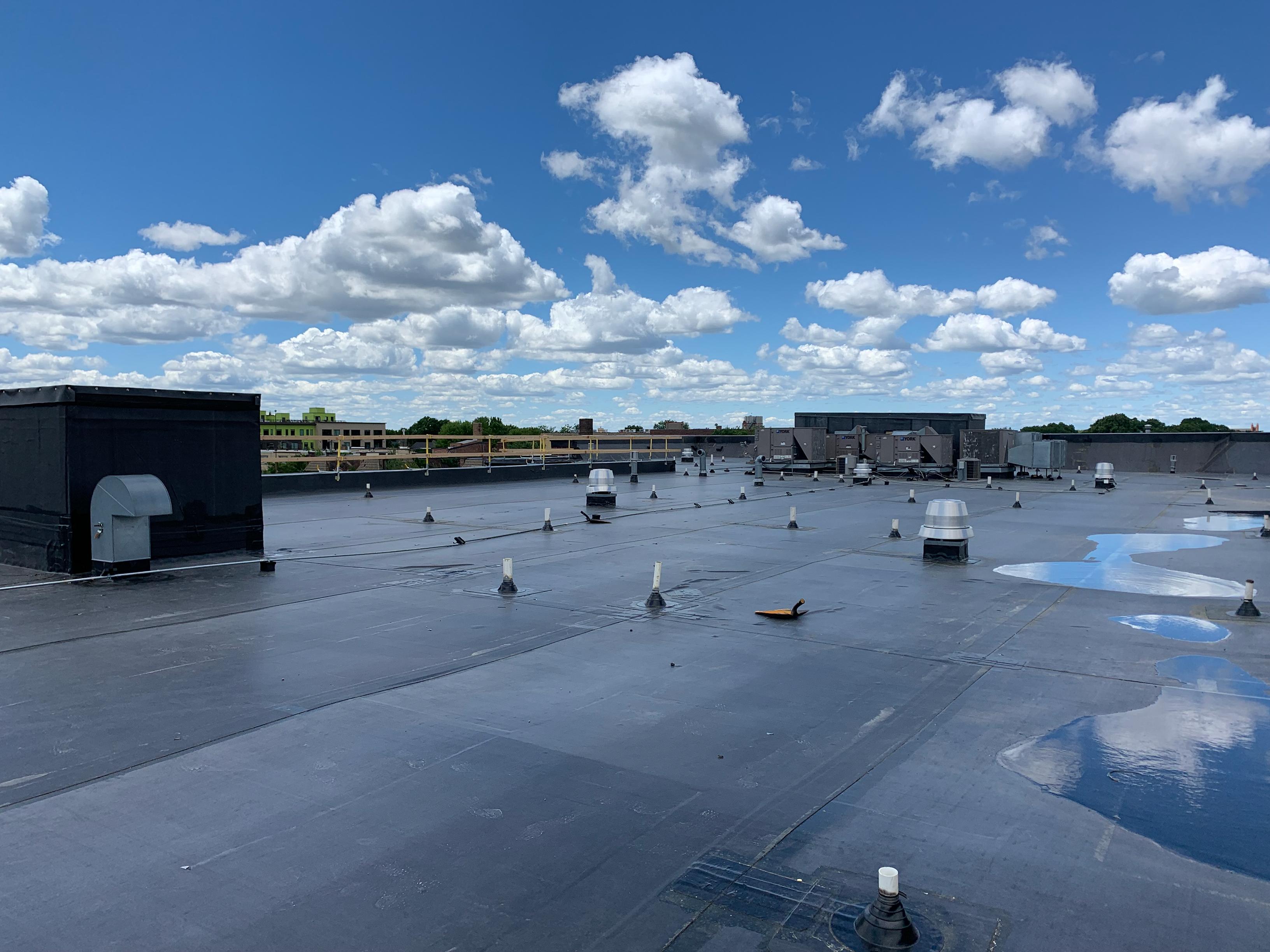
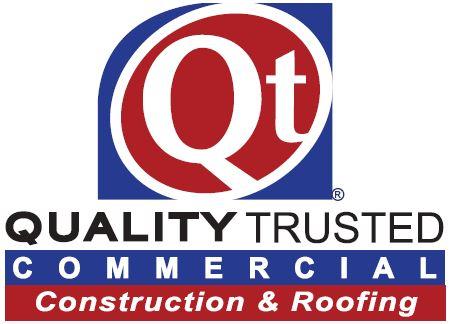
Minnesota’s #1 Roofing Installation, Repair, and Maintenance Service • • Service • • 24/7 Emergency & Leak Investigation Repair Re-Roofing and New Construction • Roofing Maintenance Plans Roofing Inspections • Storm Damage & Repairs 6909 Winnetka Ave N Brooklyn Park, MN 55428 qtcommercial.com 763-535-5831
Emerging Trends in Real Estate Report: Commercial real estate enters
“new normal” period
By Dan Rafter, Editor
Anew normal. That’s what the COVID-19 pandemic has brought to the commercial real estate market, especially in the office and retail sectors.
That’s the conclusion from the Emerging Trends in Real Estate 2023 report from the Urban Land Institute and PwC US. This report, released each year, includes proprietary data and insights from more than 2,000 real estate industry experts. And this year’s edition -- in little surprise -- focuses on the way the commercial real estate industry has evolved since the onset of the COVID-19 pandemic in 2020.
The report also looks at the more recent headwinds facing the commercial real estate industry, rising inflation rates and persistently high inflation. These two factors are already having an impact on the demand that investors have for commercial assets.
Midwest Real Estate News spoke with Byron Carlock, real estate leader for PwC US, about the report and its findings. Here is some of what this industry expert with more than 28 years of experience in the industry had to say.

Let’s start with the hot topic of the day: What impact are rising interest rates having on commercial real estate deals?
Byron Carlock: Interest rates today are two-and-a-half to three times higher than what people might have been seeing when they began their underwriting on construction projects or acquisitions. The constriction that these higher rates have had on the capital markets is very clear. There is still some funding out there, but at lower loan-to-cost ratios. More deals are going to the non-bank funds that are standing on deck waiting for the deals that traditional banks are now passing on.
Commercial real estate transaction volume has fallen dramatically in the last 60 days. The question now is how much will the industry readjust to these higher rates?
Have the interest rate hikes been too sudden? Would it have been better for the Fed to raise its rate at a more gradual pace?
Carlock: The Fed wanted to send a signal very quickly to help reduce asset inflation. There is talk about how a healthy economy might have a 5% to 6%
unemployment rate. We are now at 3.5%. This rapid escalation of the Fed’s rate, then, was designed to let some air out of the tires of this economy very quickly. Sadly, it has. What is interesting to me, though, is that the demand for certain product types is still very healthy. Multifamily housing, especially, is still in high demand. We are still an under-housed society. The developers that are trying to meet the need this country has for new housing were caught flat-footed by these
interest-rate hikes. Their deals might no longer meet underwriting criteria.
Given the uncertainty of the economy, do investors still view commercial real estate as a good investment?

Carlock: Real estate has always been viewed as a safe haven in times of inflation. Those who can increase their allocations in real estate seem to be wanting to do so. Those who are not able to do so
are hampered by the denominator effect. Their valuation doesn’t get them to the margins they need to get to other assets such as real estate. But in general, people do still view real estate as a good investment. In today’s market, some of the alternative assets such as data centers, life sciences facilities and self-storage
20 DECEMBER 2022 MINNESOTA REAL ESTATE JOURNAL
its
TRENDS (continued on page 22)
Byron Carlock
“Real estate has always been viewed as a safe haven in times of inflation. Those who can increase their allocations in real estate seem to be wanting to do so.”

LET’S MAKE OUR ENERGY-SAVING IDEAS YOUR COST-SAVING IDEAS.
us at
© 2022 Xcel Energy Inc. 8.5x11_MN-MREJ-Biz_HalfPg_Mar2022_P01.indd 1 4/1/22 11:57 AM
Your business is unique. How you save energy will be, too. Let us put all our energy into helping your company optimize energy efficiency. This is how the future is made. Connect with
xcelenergy.com/Business or call 855-839-8862 .
Tech, not amenities, the key to bringing office workers back?
By Dan Rafter, Editor
What will bring workers back to the office? Many companies are banking on flashy, high-end office spaces filled with amenities such as onsite cafes, fitness centers and hightech conference centers. But a new survey suggests that these amenities might not play much of a role in convincing employees to leave their home offices.
According to a survey of 1,000 U.S. office workers commissioned by essensys, only one in five respondents said that amenities would bring them back to the office. But 63% of respondents said that technology and flexible workspaces do inspire them to work in the office.

Of those workers, 34% said they returned to their offices, at least on a hybrid basis, because they liked the convenience and layout of their office space. An additional 27% said they liked having access to multiple workstations, while 26% said they valued their office’s more reliable WiFi.
The survey also found that 81% of respondents are frustrated with their current office experiences and 52% envy the technology available in other office buildings.
facilities are seeing great competition from investors.
There is still great concern, though, about the office sector. The post-pandemic reality is that owners have to redesign spaces to inspire people to want to come back to the office, to make it an enjoyable as opposed to obligatory experience. Building owners are redesigning office spaces for this new normal. Today, it’s about going to the office for collaboration, planning, mentoring and training, not to do the head-down work in a cubicle.
Are more office tenants seeking Class-A space to inspire their workers to come back to the office?
Carlock: That is one of the big changes coming out of the pandemic, the rising demand for Class-A-plus office space. The rates people are willing to pay for that higher class of building are very impressive. But what happens to the lower-class office space? There is a lot of talk about converting these spaces to alternative uses. Some cities are offering incentives to encourage these conversions. They might need more multifamily housing, so they are encouraging owners to convert their obsolete office buildings into apartments.
This will force some hard decisions about our existing office space. The downtown buildings with large floor plates built from the ‘60s to the ‘80s might need a change. That’s significant because about 80% of our office stock was built in the ‘80s or before. We will see a great change in which office space is relevant and which is not.
Are you seeing more apartment renters moving to the suburbs following the pandemic?
Carlock: There is evidence that the pandemic did reopen the suburbs after years of us talking about the suburbs being dead. There’s a big difference when the commute to the city for work is now two or three days a week instead of five. During the pandemic, we saw tremendous numbers of people moving further out from the city as they gained permission to work remotely. Apartment rents in most of the gateway cities are at or above their pre-pandemic levels. People are moving to the suburbs to get some relief from that. The move to the suburbs is a comment on affordability and the flexibility that comes from working remotely.
Are more companies moving their office spaces to less expensive but still large cities now that so many of their employees are working remotely?
cre -
Carlock: We have seen more migration southward. People have chosen to move to business-friendly environments with relative affordability and easy access to a talent base. They are moving to cities like Nashville, Austin, Dallas and Phoenix. We can’t ignore the attractiveness of business-friendly, low-income-tax states like Texas and Tennessee.
Just look at Nashville. It’s hard to go there and not say, ‘My goodness. I can see myself living here.’ It’s a business-friendly environment. There are talented workers available. Some of the financial services businesses that have moved to Nashville from New York thought that they might have a hard time persuading their New York City workers to move to Nashville. But it turns out that those workers love living in Nashville.
This issue of mobility and the attractiveness of cities and states is something worth noting for cities struggling to keep their businesses. Just look at the corporate relocations and exodus we’ve seen in Chicago. Some of these cities that are losing businesses might need to move away from the tax-and-spend policies they’ve relied on in the past.
What should cities do today to keep not only their businesses but to inspire people to want to move to their multifamily properties?
ating an attractive physical space is important, it’s only one part of the puzzle. Our research revealed that the real driver is access to in-office tech.”
More than half -- 56% -- of the 1,000 U.S. workers surveyed said that the tech in their offices enhances their ability to work.
What tech do workers want in their office buildings? Building-wide WiFi, sensor-controlled lighting and climate control and the ability to access space and services across a network of locations.
“Technology can’t be overlooked as a tool in the back-to-the-office battle,” Bernard said. “Against today’s backdrop of economic uncertainty, this can’t be, nor should it be, ignored. The modern office is completely changing. If real estate strategies don’t evolve quickly and support today’s occupiers, there will be even tougher roads ahead in the fight to remain competitive and relevant.”
Carlock: Can we re-imagine our cities? As polarized as we get in this country about political and social issues, we can all agree on the importance of art, green space, gathering spaces and music. Our major city cores continue to offer all of that. You can’t recreate the depth of culture that has been developed during 100 years or more in our cities. If we could move away from the political polarization to think about making our cities better and more attractive for people, that could make a major difference in our country.
That’s a lofty goal, but it is doable. There is an emotional draw to the urban core. History has taught us that. Just look at Chicago. It has such wonderful architecture and culture. If we could solve some of the big problems cities face and focus on the culture and beauty that they provide, we can make a dramatic improvement in our country’s health. We need to find a way to improve the collaboration between public and private funding to do greater things to reimagine our cities.
22 DECEMBER 2022 MINNESOTA REAL ESTATE JOURNAL
“Many of the conversations we have had on the return to the office have been around investment into top-of-the-line amenity space,” said Jeremy Bernard, North American chief executive officer of essensys, in a statement. “While
TRENDS
(continued from page 20)
In times of disruption, tried-and-true solutions won’t do. You need more — more innovation, broader perspective, keener foresight. We’ve learned this in our three decades of service to the real estate community. Through ups and downs. In good times and hard times. We’re ready to put our experience to the test again and help you find the way forward. Visit us at: MMBLawFirm.com

WHEN THE WORLD TURNS UPSIDE DOWN, IT’S TIME TO REDRAW THE MAP
Has industrial hit its peak? Not quite yet
By Matt Kovesdy and Jonah Yulish
During the past two years, investors have flocked to industrial real estate. Urgent demand, high rent growth and low vacancy proved to be a recipe for success for the commercial real estate asset, recording historical growth and sales numbers. Now, as the world moves into a post-COVID-19 era, the sector still looks to be top dog, but will that change?
As markets across the country ramped up development, consumer trends started to change. E-commerce dominance slowed, pre-leasing stalled and big-box tenants abandoned expansion plans. What does this all mean for industrial real estate, and what should investors look out for?
The
king of CRE
Industrial real estate throughout the U.S. performed strongly in 2021 and continued that success in 2022. Year-overyear rent growth is 11.6% and vacancy 4% as of September 2022. Demand for properties is still healthy and developers are keeping pace with demand in most major markets.
The concerns of some investors sprout from a shift of consumers pulling back from e-commerce and returning to brick-and-mortar retail. Online retailers dominated the retail space in 2020 and 2021, but shoppers are excited to be back in-person, craving a more personal experience after long periods of seclusion. This consumer shift caused a decline in the expansion of warehouse and fulfillment facilities.
Another reason investors are wary is the threat of a hard-landing recession as inflation continues and the stock market witnesses volatility. Lastly, purchasing power is down, making it more difficult to buy and lease since sale and rent prices are at record levels for industrial properties.
High-level leasing
Lease rates are more expensive than ever. As of late August 2022, new industrial leases were $1.45 more per square foot than leases already in place. The gap between the average lease, market rate and leases signed within the last 12 months is also higher than ever. The current average lease rate for the past 12 months is $8.05 per square foot, whereas the average was $6 in July 2022.
The markets seeing the most leasing activity and year-over-year rent growth are port cities, as they offer proximity to major coastal shipping terminals. The top five metros are the Inland Empire with 8.7%, Boston with 8%, New Jersey
with 7.8%, Los Angeles with 7% and Orange County with 6.8%.
Building for the future
Because of deeply constricted supply, industrial projects couldn’t be built fast enough throughout 2021, leading to a robust pipeline in 2022 and the following years. There are currently 844 million square feet underway across the
United States, 70% higher than development numbers before the pandemic.
Although demand for industrial has sustained and even strengthened in specific markets, some real estate experts predict that up to 90 million square feet built will not be leased within a year of completion. As of late 2022, 62% of properties under construction have not been leased. But as others raise concerns about overbuilding, others say

that it is almost impossible to overbuild industrial assets because the market is so tight for supply, and the need is not going away.
Construction is only getting more expensive and complex, meaning it would be difficult to continue the level of development long-term. The industrial pipeline needs to stay stocked in a time of great demand and limited options.
What’s next for industrial?
There may be some skepticism surrounding the overwhelming construction of industrial facilities and climbing rent rates, but all in all, industrial is here to stay. Investors will continue to pour capital into the sector in hopes of continuing low vacancy and strong profits. Absorption rates are expected to moderate; however, vacancy will remain stable, securing industrial as a top investment.
Matt Kovesdy is associate vice president for industrial with the Cleveland office of Matthews Real Estate Investment Services. Jonah Yulish is senior associate for shopping centers with Matthews’ Cleveland office.

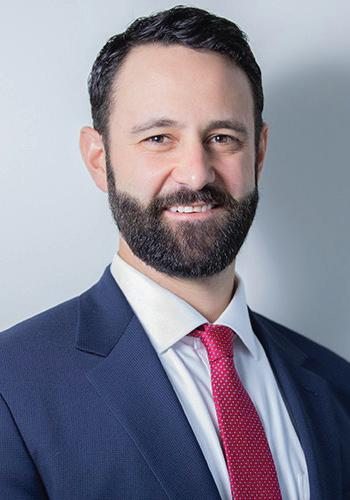
24 DECEMBER 2022 MINNESOTA REAL ESTATE JOURNAL
Matt Kovesdy
Johah Yulish

Still quitting? Waiters and fast-food workers are seeking greener pastures
By Dan Rafter, Editor
Fast-food workers, chefs and waiters are quitting their jobs at a faster rate than are any other workers, according to a study released last week.
The study, from document-management tool SmallPDF, analyzed numbers from the Bureau of Labor Statistics to score every industry’s quit rates, the percentage of total workers quitting an industry every month, and quit levels, a measurement of how many employees quit in total each month.
According to SmallPDF, the accommodation and food services industry saw an average of 5.8% of its workforce quit between April and August of 2022, the period in which the study was done. That industry includes chefs, waiters and fastfood workers.
More than 773,600 of these employees left every month on average during SmallPDF’s study. In August of 2022, 128,000 more workers in the accommodation and food services industry left their jobs than did during the same month a year earlier. It’s little surprise, then, that fast-food and
other restaurants are struggling to hire enough workers.

In second place in the survey was the retail trade industry, which includes jobs such as customer-service representatives, cashiers and stock clerks. An average of 600,400 employees quit these jobs every month
from April to August of 2022. In good news for this sector, though, about 109,000 fewer employees quit these jobs this August compared to the same month in 2021.
The arts, entertainment and recreation industry ranked third on the list, a sector that includes fitness trainers, recreation at-
tendants and musicians. About 7,000 more employees quit these industries in August of 2022 compared to August of 2021.
Fourth place goes to the professional and business services industry, including lawyers, accountants and architects. About 754,000 employees quit every month between April and August. The quit rate was, on average, 3.36% during these months. In a sign that workers are holding onto their jobs a bit more in these fields, August 2022’s quit number came in at 63,000 fewer employees than the quit level of August 2021.
Rounding out the top five is the transportation, warehousing and utilities industry, which includes pilots, bus drivers and truck drivers. An average of 199,400 quits took place in these industries every month from April and August of this year. August 2022’s quit level in these industries came in at 32,000 employees higher than August 2021’s level.
26 DECEMBER 2022 MINNESOTA REAL ESTATE JOURNAL
to SmallPDF, the accommodation and food services industry
“According
saw an average of 5.8% of its workforce quit between April and August of 2022.”
Welcome to Greater Mankato.

Invest with Confidence
CURRENT INVESTMENT
Our marketplace has been noticed and continues to be seen as a solid investment , with over 1.5 billion dollars in capital investment in the last 10 years.
“Greater Mankato Growth staff are among my hardest working partners. They are dedicated advocates for the Greater Mankato region. They are responsive to requests and work diligently to provide and update information as it is requested by the businesses I work with. They make projects a reality!” – Lisa Hughes, Department of Employment and Economic Development
HIGHLY RATED We’re #1 in manufacturing within Greater Minnesota, #13 of top small cities for business in the U.S. , and the best college town to live in after graduation, just to name a few.
GreaterMankato.com
People love their furry companions: How investing in veterinarian’s offices has boosted the bottom line of one CRE firm
Finding the right niche matters in commercial real estate. And Terravet Real Estate Solutions has found one: The Bala Cynwyd, Pennsylvania-based firm buys, leases and expands existing veterinary properties across the country, including several in the Midwest.
After buying these properties, Terravet often enhances these facilities, turning them into the modern medical offices that today’s pet owners expect. Terravet might also help veterinarians find new locations as their practices expand.
This might seem like a small niche. But Dan Eisenstadt, founder and chief executive officer of Terravet, said that it’s a growing one. People spend a lot on their pets, and they’re not shy about taking them to the veterinarian when they need medical attention.
We spoke with Eisenstadt about his commercial niche, why his company focuses on veterinary practices and why working this commercial real estate property type is becoming so lucrative.

I’ll start with the obvious question: Why focus on veterinarian’s offices?
Dan Eisenstadt: I was in a private equity role for about 12 or 13 years. A couple of partners and I were thinking of going off on our own. The first thing we did was focus on investing not in real estate but in the operating of businesses, the actual practices. This was pre-2009. The economy had turned bad. We tried to figure out where we could be most productive. We wanted to find something that wasn’t outsourceable to China. What about veterinary practices? We got excited about that.
I eventually co-founded a business that was an operator of veterinary practices. It grew to about 45 practices before I sold it. The second practice we bought was run by a husband-andwife team. They owned the real estate and we bought the majority of the practice. One day, we got a call from the husband. Their kids were going to college, so they were interested in selling the real estate to help pay for that. He wanted to know if I had any interest. We negotiated and we ended up buying that real estate. That’s when the light bulb went off.
What inspired you to make the leap into buying the actual real estate instead of just operating the practices?
Eisenstadt: There were a lot of institutional investors buying and backing the practices. But no one was buying the real estate. There seemed to be an opportunity for institutional players to get into owning this kind of real estate.
These are unique facilities. They require a significant amount of buildout. It’s better if they are free-standing instead of in-line. They have unique HVAC needs. At the same time, there
is significant growth in this sector. The number of vets and the number of visits to vets is increasing. What had been developed in this space over many years wasn’t going to be suitable for the future. More and more institutional investors are entering the operations side of these practices. They are going to want more sophisticated facilities. We thought this could be a good move, to become the first mover in veterinary real estate.
No one was really thinking of this as an asset class. We raised a small friends-and-family fund and bought seven or eight buildings. We found other vets who might want to sell. We raised an $80 million equity fund about five years ago, and we’ve steadily grown since then.
How many veterinary facilities do you own now?
Eisenstadt: We own about 200. We are coming up on a million-and-a-half square feet of real estate in this sector in 39 states.
We own two types of veterinary real estate. One is general practice real estate, where you have three or four vets in a single building. They are typically open from 7 a.m. to 8 p.m. in retail locations. You need to have good parking and be close to bedroom communities for these facilities. They are typically 4,000 to 7,000 square feet.
The second type we own are emergency, 24/7 hospitals. These are more often located in commercial office or flex industrial areas because you only go there if there is an emergency or they are referred. That real estate is bigger, about 10,000 to 40,000 square feet.
Why is the number of veterinary practices and office space growing so fast?
Eisenstadt: The pet population has grown. During COVID, a lot of people got that COVID puppy. Then there’s the theory that as more Americans are home with their pets, they
By Dan Rafter, Editor
bring them in to the vet more often. They will notice different things. Whether that theory is true or not, we don’t know. We don’t have hard data on that.
Another thing, though, is that the human-animal bond is increasing. That is driving all sorts of innovations in veterinary medicine and ancillary products. There are new pharmaceutical innovations. There is new diagnostic testing. This combination of additional diagnostics and pharmaceutical solutions, along with the strengthening of the human-animal bond, has all combined to boost veterinary visits. People treat their pets more like their kids in terms of how they think about healthcare. That trend of more innovation and more medical interventions being available is helping to drive the growth of veterinary facilities.
When you purchase a veterinary office, do you often have to modernize the facility?
Eisenstadt: We have renovation and expansion projects going on in about 20% of our properties. This runs the gamut from renovating the front office to adding an exam room. Other times, the practices are growing and the veterinarians need to find a new building. In this case, we often identify a building, buy it and the veterinarians move in.
That is happening quite a lot. For example, we are turning an old furniture store into a specialty emergency hospital that will cover about 25,000 square feet. Another project involves turning a former micro-brewery into a specialty hospital.
It runs the gamut. There are quite a few buildings that we acquire that are in great shape. We do stay away from converted houses. About 30 or 40 years ago, there were a lot of homey practices like that. That has changed as the human-animal bond has strengthened and veterinarians prefer to work in a more professional environment.
Another big driver is the shortage of veterinarians. The demand for veterinarians is far outpacing the number of vets coming in. There aren’t enough veterinarians to cover all the shifts today as so many practices expand their hours.
What factors do you consider when looking for the right veterinary facility?
Eisenstadt: We look at a few factors. On the facility side, purpose-built matters to us. But you could have a bank building, say, that has been converted to a veterinary building that works well. We look at the quality of the building. We want the internal systems of a building to be good. Parking matters an enormous amount. You need good visibility from the street. The other thing that matters to us is the quality of the tenant. That is almost as important as the
quality of the facility. If you have a large veterinary practice that has been in business for 40 years and is a staple of the community, that matters. If the practice is financially stable and profitable, that matters, too. If it is owned by a corporate group that is well-established, that is great.
What we get concerned about is if we see a lesser building that has no room for growth and poor parking. We aren’t interested in older facilities that look tired or have a lot that is too small.
How have rising interest rates impacted this commercial real estate type?
Eisenstadt: Like all commercial real estate, most buyers are using debt to finance the purchase of veterinary buildings. The increase in the cost of debt decreases the return you are going to get. It is true that we have started to see cap rates inch up in this space. There has been a lot of interest in veterinary real estate from 1031 Exchange buyers. These are stable assets. They didn’t have to close for COVID. So there was a bit of a lag in the bump in cap rates. Now we are starting to see a shift in that.
We are not immune to interest rates. We have a debt facility led by a syndicate of banks. We are proactive in trying to cap our interest rate exposure. We are still in a pretty good position. We have equity and det that is committed.
Do you plan on acquiring new veterinary assets in 2023?
Eisenstadt: We have our third fund, a $190 million equity fund, about half invested. We will continue to put properties under agreement in that. During the summer, we launched a private REIT that is entirely focused on veterinarian practices with strong buildings, veterinarians who want to swap their buildings for a piece of a REIT partnership. They can go from one building to owning a partnership interest in 20 or 50 buildings.
We expect to continue to invest in the next year. Commercial real estate is still a good investment. If you have good tenants that can perform through inflation and recessionary periods, commercial real estate can be a great driver of cash flow.
People are going to continue to spend money on medical care for their pets. They are going to take their sick pets to the hospital or clinic. We are always going to need facilities for veterinarians. We like this niche. When we started in this space 10 years ago, people would always say, ‘You’re investing in what?’ Over time, that is changing. This little nice of veterinary real estate has emerged a bit. We are excited about what the future holds.
28 DECEMBER 2022 MINNESOTA REAL ESTATE JOURNAL
Dan Eisenstadt
Innovative Design Project at Wakpada
Apartments Hall Sweeney Properties revives neighborhood corner with building that honors Dakota culture and language
 By Christopher Johnston
By Christopher Johnston
Despite being in the midst of a global pandemic, Jeff Hall and Sean Sweeney saw the potential to revitalize an urban corner of the scenic Hiawatha neighborhood in Minneapolis. The name “Wakpada” is the Dakota word for creek. So, they also optimized an ideal opportunity to connect their building to the area’s beautiful natural setting along the Minnehaha Creek and the authentic Native American culture and history of the region.
Despite being in the midst of a global pandemic, Jeff Hall and Sean Sweeney saw the potential to revitalize an urban corner of the scenic Hiawatha neighborhood in Minneapolis. The name “Wakpada” is the Dakota word for creek. So, they also optimized an ideal opportunity to connect their building to the area’s beautiful natural setting along the Minnehaha Creek and the authentic Native American culture and history of the region.
The resulting 126-unit, $26.3 million Wakpada Apartments delivers a sharply designed, modern urban living opportunity conveniently located near public bus routes and a light rail system that connects residents to the rest of the city. The six-story building opened this past summer and is already more than 90% occupied. All of this stands in keeping with Hall Sweeney Properties’ underlying mission to promote neighborhood development.
29 DEVELOPMENT SHOWCASE: WAKPADA APARTMENTS
“We are very design focused, and we’re long-term owners of the projects,” says Sean Sweeney, co-founder of the firm. Our ethos is to spend time in the community, learn and understand their needs, and work closely with the community to produce projects that will fit well into that community.”
According to Sweeney, the Hall Sweeney philosophy is to build units that are slightly smaller than the average size, so their one-bedroom units are approximately 450 to 550 square feet where the more common standard might be 650 to 760 square feet. That approach allows the five-year-old development company to produce higher density projects and fit more units into the site.
“Most of the time, our goal is to produce units that are slightly less expensive than the top of the market, Class A luxury units, but offer what we consider a comparable product,” Sweeney explains.
What makes Hall Sweeney properties more attractive to many is the fact that their buildings are nicely designed with all of the “bells and whistles” in terms of amenities and location. What’s truly enticing for residents, Sweeney says, is they receive that much more bang for their buck even though they could have another 150 or 200 square feet of space across the street for another several hundred dollars per month.
“We’ve found a sweet spot in that area and have just continued to do buildings like that because we feel good about it,” he says. “They have resonated well with the communities, and they’ve all filled up relatively quickly with people wanting to make that choice.”
Ten of the units or 8% of the building offer affordable housing, which are restricted for people making 60% of the area median income, and those rents are capped at a certain level.
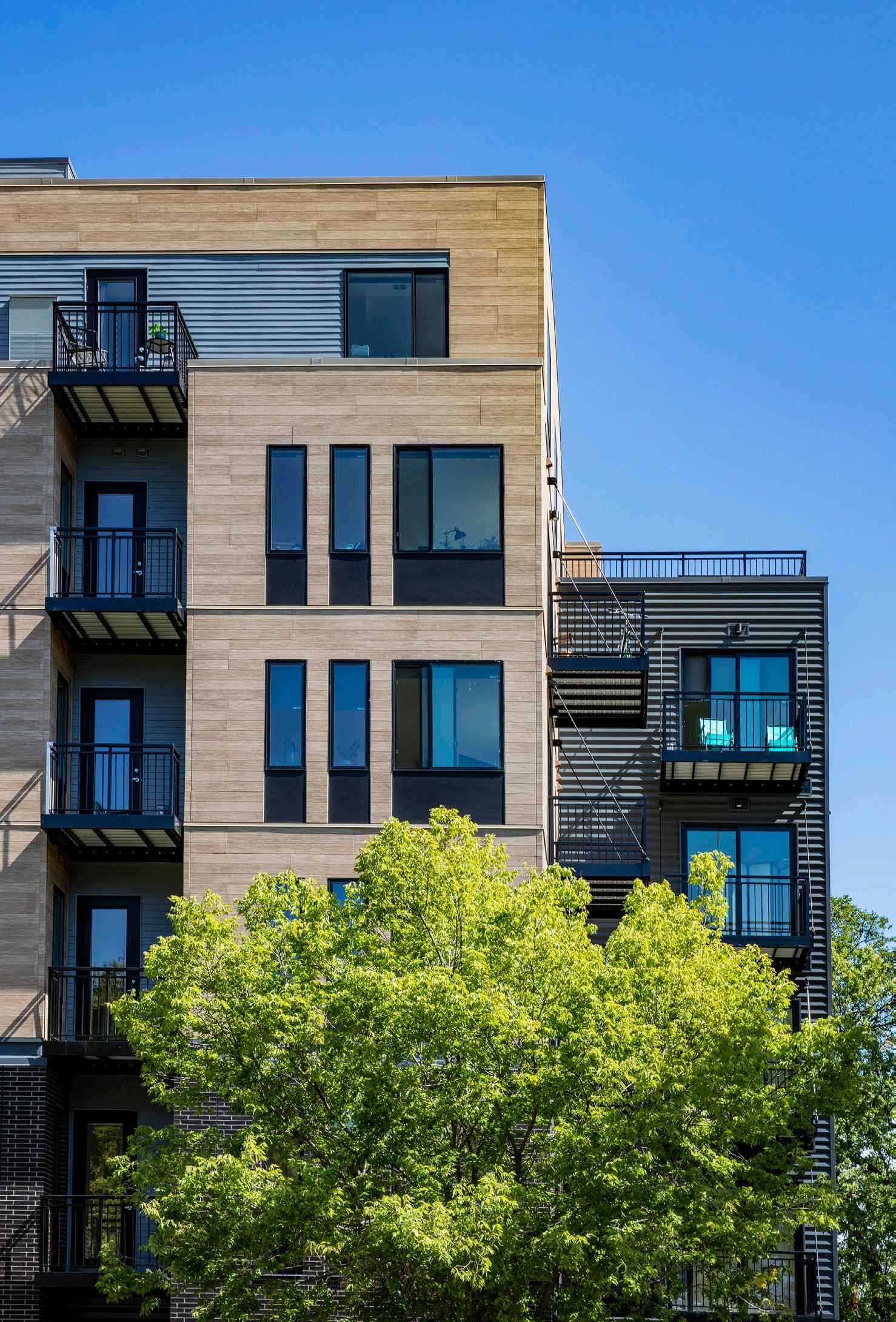

History of the project
The company was already familiar with this neighborhood corridor because Sweeney was a partner in the new building across the street from the site, MN46 Apartments near the 46th Street light rail station. Hall Sweeney had heard that a previous deal to redevelop an existing gas station on the site had fallen apart.
Hall Sweeney began to investigate acquiring the property, but they knew that to build an apartment structure of any size with sufficient parking spaces, they would need to acquire two neighboring properties, which were two duplexes. Next, they went through the city entitlement process, which was a bit challenging because Minneapolis’s new long-range 2040 plan had been approved but not implemented at the zoning code level yet. The entitlement process required Jeff and Sean to go door to door to obtain the signed approval of 13 of the 19 surrounding property owners to apply for the rezoning from residential to allow a larger building.
Having to knock on doors was doubly challenging at a time when COVID-19 made everyone afraid to talk with strangers, but Hall Sweeney did it.
“It’s just a great location,” Sweeney says. “It’s very central, close to the airport, close to downtown, with many walkable amenities nearby. We’re one block north of the largest park in the Minneapolis park system, two blocks from the light rail station, and there are five bus lines that run past the property. For our tenant base, our folks are typically on the younger side who want to live in great spots and are willing to trade location and amenities for space.”
30 DEVELOPMENT SHOWCASE: WAKPADA APARTMENTS

Key design features
To take full advantage of their location, the design maximized the beautiful setting, starting with a rooftop deck on the 6th floor boasting splendid views of downtown. The community room on the same floor offers comfortable places to relax and enjoy similar views year-round.





Inside, Wakpada Apartments are full of alluring and engaging attractions as well. A fully-decked out fitness center complete with squat racks and a bench press was custom curated by Logan Bautch of Custom Wellness Spaces, a friend of Sweeney’s who owns a couple of cross-fit training gyms. “In a lot of apartment buildings, gyms are an afterthought,” Sweeney notes. “But we took a risk and invested a little more time and effort and ended up with a really cool space, and it’s been a huge hit.”

As part of the effort to navigate the world of COVID, the design by Collage Architects converted spaces originally intended as storage areas into Zoom rooms on the third, fourth and fifth floors. The goal was to provide residents now working from home with an option to take a Zoom call in privacy, if necessary.
The building also features 4,000 square feet of commercial space on the first floor that has not been leased yet. However, the partners envision a corner coffee bar or boutique gallery with some co-working space for residents. Additionally, it will likely contain third-party co-working space, since leasing retail space is more difficult with the predominance of online purchasing; co-working spaces continue to grow in popularity.
32 DEVELOPMENT SHOWCASE: WAKPADA APARTMENTS
“We had to evaluate a number of different capacities and strategies based on different zoning,” informs Pete Keely, president, Collage Architects. “So a lot of the initial work was determining what could go on the site at this time with the city of Minneapolis changing a lot of its policies, but the neighbors appreciated the fact there would be some spaces to balance the large commercial building.”
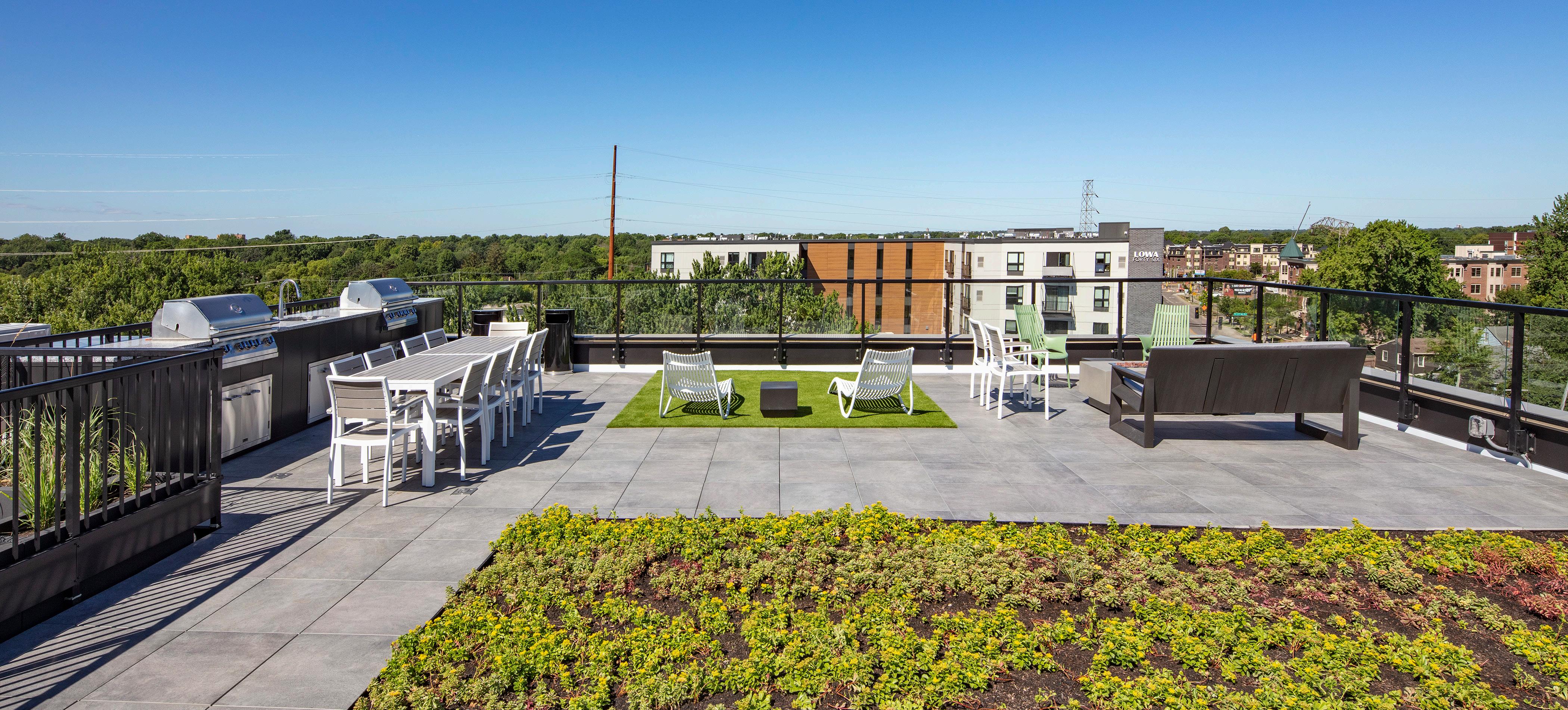
Keely adds that the exterior colorings and the expansive, floor-to-ceiling windows on the first floor make the building appear to float above the glass band.
“We wanted to create corners for each of the units,” he adds. “So, we have internal recesses from balconies but when you go into those spaces it creates a section that has two-sided light even though it’s the mid-level of the building.”
Honoring American Indian Culture and Language
On a spring break vacation with his family, while walking on the beach, Hall was listening to a favorite podcast, “Seeing White.” The fifth episode about the

33 DEVELOPMENT SHOWCASE: WAKPADA APARTMENTS
Thinking about your business is a big part of ours. PUT OUR REAL ESTATE INSIGHTS TO WORK FOR YOU. To make confident decisions about the future, Twin Cities leaders need a different kind of advisor. One who starts by understanding where you want to go and then brings the ideas and insights of an experienced global team to help get you there.
the power of being understood.
RSM. rsmus.com/realestate RSM US LLP is the U.S. member firm of RSM International, a global network of independent audit, tax and consulting firms. Visit rsmus.com/aboutus for more information regarding RSM US LLP and RSM International
Experience
Experience
“A lot of apartment buildings have random names, often with no connection to the site,” Hall says of the responsibility he began to feel to acknowledge the great heritage of the Native Americans who have lived here for many centuries. . “I thought if we could tie our building to the history and make a market-rate building but give it a deeper meaning so that people learn about the history, language and culture of the Dakota people who still live in Minnesota, it would be interesting and educational.”
He did not know any Native Americans at that time, but he soon met Sisoka Duta while attending a 5K fundraiser event for the Wakan Tipi Dakota Educational Center in St. Paul. Duta teaches Dakota language at the University of Minnesota’s Twin Cities campus. Hall asked him to join the project as a linguistics expert who could guide them in finding an appropriate Dakota name for the apartment building and other aspects to help preserve the Dakota language and “share some history and values so that people come in contact with the language and the culture as they live in or walk by the building.” The name Wakpada (“creek”) emerged because of the proximity to Minnehaha Creek and because American Indians know water is essential for life, and must be protected.
Sustainability is an important American Indian value, and because the project incorporated sustainable features and native landscaping, Duta helped create small signs to identify the different plants in English and Dakota and describe how the Dakota traditionally use some of the plants in their culture., Also, Hall Sweeney donated to the National Forest Foundation to plant new trees to offset the wood that was used to build Wakpada.
Duta, who is also an investor in the building, said “These two guys are showing that it is possible for other businesses in the area to consider how they can work with local people in the community to do projects like this.”
Hall also met Angela Two Stars at the opening of her installation at the Walker Art Center Sculpture Garden in October 2021 . She agreed to work with Hall Sweeney,
and created three pieces that are installed outdoors in an art plaza at the front entrance: a corten steel and enamel sculpture that addresses the teachings from the Native American Medicine Wheel that represents the sacred circle of life; four sidewalk stamps that represent the elements in water: hydrogen, oxygen, nitrogen and phosphorous; and four corten planter panels displaying a creek that was laser cut into them.

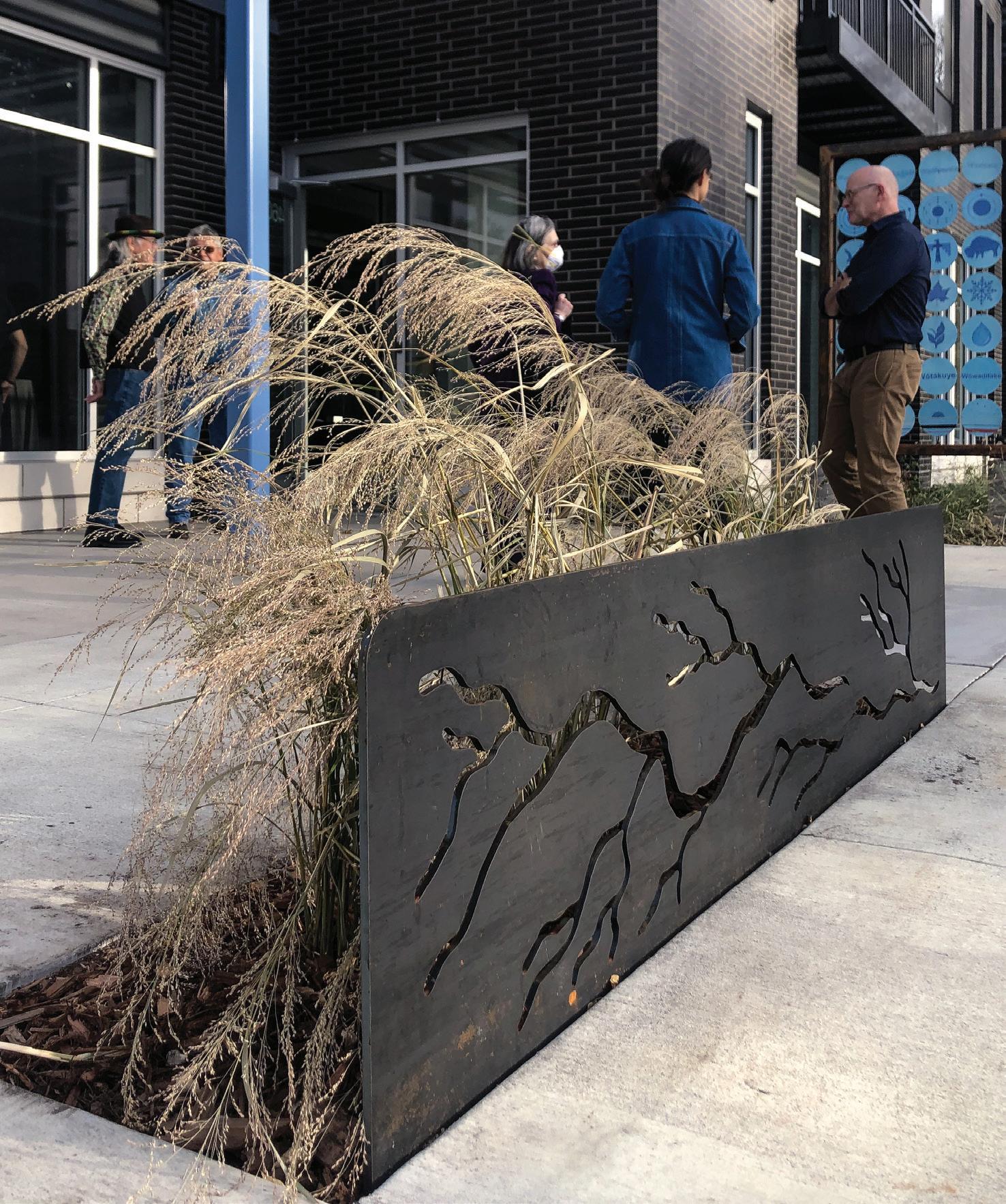
“I was inspired by the name of the building, which is Dakota for creek,” she says. “I was inspired by the theme of let life flow, and I was thinking about all of the elements of life, and they all fall into the Medicine Wheel teachings and the Seventh Generation teachings that everything you do will impact people seven generations from us.”
Additionally, Angela Two Stars assisted Hall Sweeney in connecting with other American Indian artists. Gordon Coons painted a colorful mural for the fitness center, and Jordan Iwan took wonderful waterfall photographs displayed in different locations. Ne-dah-ness Greene shot the gorgeous nature photographs featured in the elevator lobbies, and Brian Dow created the background art in the office rooms.
“Jeff and Sean felt it was important to support Native artists as a whole,” Angela Two Stars says. “So, I think that was one of the biggest values with Wakpada that Hall Sweeney invested in Native artists.”
Construction challenges
Kirk Pennings from Yellow Tree Construction Services, the general contractor, worked closely with Collage Architects and Hall Sweeney to provide real-time feedback on different pricing numbers early in the project.
“We developed the budget going through the design-build process so that they wouldn’t design the building and get to the end and figure out it didn’t work,” he says. “So that’s one of the reasons for the success of the team approach that Sean and Jeff have brought into our projects that we’ve all done together over the past few years, including Wakpada.”
34 DEVELOPMENT SHOWCASE: WAKPADA APARTMENTS
U.S.-Dakota War in nearby Mankato, Minnesota, made him reflect on the importance of the location of Hall Sweeney’s new project that would rise on the banks of Minnehaha Creek.
There were several initial challenges on the site, including the removal of a leaking gas tank and contaminated soil and water from under the closed gas station on the corner, Pennings says. Complicating the operation and the environmental cleanup was the high water table on the site.
“You could smell the fuel down in the pit, so we had to pump contaminated water and haul it off the site,” Pennings recalls. “But we specialize in that type of urban infill project, so that part of it was challenging, but it wasn’t anything out of the ordinary for us.”
Yellow Tree had to deal with all of the supply chain obstacles caused by the pandemic, too. For example, they knew they had to order all of the appliances for the building early to get them installed on time. Several different carpentry crews they had hired either didn’t show up or they couldn’t be on the site, he says. They ended up hiring several individual carpenters to complete the finished carpentry on the cabinets, doors and trim.

toward the street on the north and south sides, and the open balconies create more opportunities for residents to enjoy the views.
“It feels like it has more vitality and that corner has more lighting to it, as well,” Keely says. “We wanted to step the building down into the neighborhood to provide a transition from the larger commercial building into the single-family homes and the neighborhood.”
“We have now built two buildings on that corner,” Pennings comments. “But Wakpada and the other newer building have really changed that neighborhood for the better. People want to live there.”
For his firm’s part, Sweeney says they are very happy with the mix of housing and commercial opportunities Wakpada brings to the neighborhood, which will help keep it vital and thriving. He also believes in the effectiveness of the team

“You hit some of those ‘out of your hands’ challenges like COVID and supply chain issues, and it’s great to have partners you’ve worked with before to navigate difficult situations together,” Sweeney concludes. “Because we’ve all worked

35 DEVELOPMENT SHOWCASE: WAKPADA APARTMENTS
WAKPADA APARTMENTS. PROUDLY BUILT AND MANAGED BY YELLOW TREE. LET’S BUILD SOMETHING TOGETHER
We connect the dots, and make the connections.
Bridgewater Bank.
BWBMN.COM Member FDIC Discover

 By Dan Rafter, Editor
By Dan Rafter, Editor





































 By Staff Editor
By Staff Editor



















































 By Christopher Johnston
By Christopher Johnston
















